The twists, turns of Robert Carter’s long NBA draft road

In 1951 Mrs. Warren Bicknell Jr. claimed possession of Sinkola Plantation, named after the three-acre sinkhole found on the property located in Thomasville, Ga. The plantation has been in the same family for over four generations, growing crops and hosting the highest density of wild bobwhite quails in the entire United States.
Neal and Mattie Carter lived on and maintained the Bicknell’s plantation, raising their nine children on the farmlands. The kids would fish on the property’s pond, play with the hunting dogs and dabble at basketball, bouncing a ball on a slab mixture of concrete and clay dirt. Robert was their first born on the plantation and he eventually towered to 6’2", developing into one of the most decorated basketball players in the history of Thomasville High School. He went on to play collegiately at Miami Dade College and then for Abraham Baldwin Agricultural College in Georgia before a knee injury derailed his career.
Déjà vu tickled Robert in Dec. 2013, when his basketball protege, his 19-year-old son, Robert Carter Jr., suffered a knee injury of his own. Carter doesn’t quite remember the exact incident in question. “I didn’t even know I was hurt,” he says. Somewhere along the way to Georgia Tech’s 58–55 victory over Charlotte in the Yellow Jackets’ non-conference finale, the sophomore forward began favoring his right leg. He was a full participant in the following day’s practice, taking part in sprints and hoisting jumpers like any other afternoon. Still, Tech trainer Richard Stewart urged Carter to undergo a cautionary MRI. The result: A torn meniscus in his left knee.
• Buddy Hield, best shooter in NBA draft | Bembry carries heavy heart
“I needed to have surgery,” Carter says, the deflation still hanging in his voice years later. Doctors forecasts a 6–8 week recovery, effectively wiping out the entire ACC schedule Carter had trained for all off-season, and the sapped muscles engulfing his knee seemed to confirm that prognosis. His first steps on an alter-gravity treadmill fueled a more optimistic goal for Carter, though. Extended hours of resistance training bolstered his knee as well. After four short weeks, he returned to score five points, grab two rebounds and dish one assist in 16 minutes against No. 20 Virginia.
Carter finished the year on a rampage, posting 16.7 points and 8.5 rebounds per game over the season’s final six ACC outings. He infiltrated defenses with a more meticulous scoring attack he developed while nursing his injury from the sidelines, and garnered attention from NBA scouts in the process. “I learned more about my team, my offense, ways I could score the ball, things like that,” Carter says. “I learned more about the position I was in and how to improve my overall game within the team.”
Three years and a transfer to Maryland later, the 6’9", 250 pound Carter has emerged as an attractive second round prospect in June 23’s NBA draft. He’s impressed league personnel with an overall offensive fluidity—feathery jumper, deft playmaking, a poised pace—that Carter began honing when he was three years old.
• NBA draft rumors: Latest buzz, news | Bender could be NBA sensation
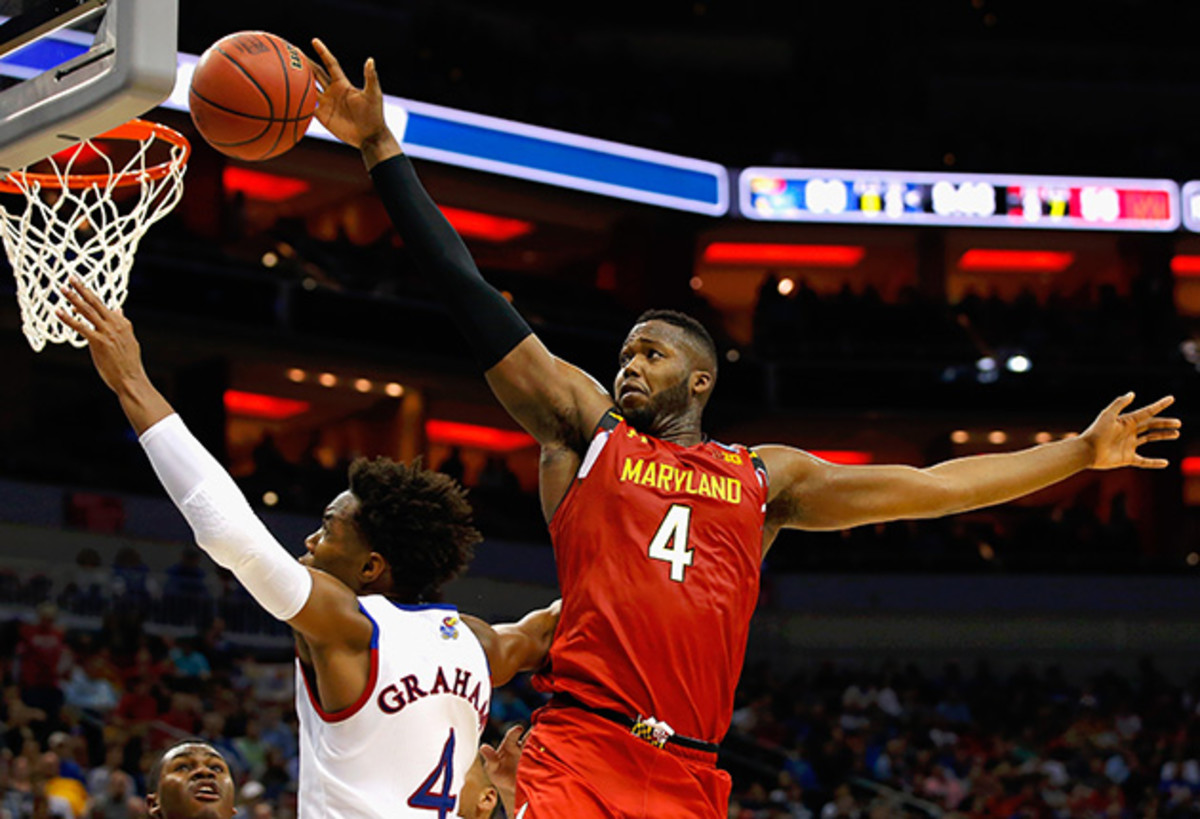
After Robert helped raise his wife’s seven children, his only biological child entered the world. In a much quieter home, Robert hoped to to raise a basketball star—a gamer who would far surpass his own career—and plunged a hoop into the grass across the street from their home in Thomasville. Congruent with the humble country life they led, dad stripped off the base of the basket, the black pole simply emerging from the ground and jutting the red, iron rim out over the blacktop road. “I just played in the street,” Carter says fondly.
His ball would bounce off the asphalt day or night, rain or shine. Father and son began lessons early. “It was really at three where he started practicing and developing some kind of skills,” Robert says. He quickly sprouted to 6’2" by fifth grade, towering over his classmates, and standing eye-to-eye with his father. Carter would shoot on the hoop well past sunset. “He’ll be out there 'til one in the morning,” his father says. “I had to go out there and get him.” The incessant dribbling made sleeping difficult for the Carter’s 93-year-old neighbors. “They used to say he’s gonna be good because he’s out there bouncing that ball,” Linda says. Stardom seemed guaranteed.
Carter first flashed greatness at the downtown Everett-Milton Center. He was the tallest player in the YMCA rec league—“He’s always been a big kid. Period,” Linda says—resembling a high schooler playing amongst 10-year-olds. When he was finished bullying his smaller opponents, he’d dominate on the rec center’s ping pong table. “I got really good at that because the first couple times I played, I liked it but I lost. That didn’t work for me,” Carter says. “I’m really psycho-competitive. Every time I’d play a rec league game, I’d run in there and play. I’d go in there just to whoop people.”
After a recent pre-draft workout for the Los Angeles Lakers, Carter and several other NBA hopefuls noticed the ping pong table at the team’s practice facility in in El Segundo. He hung 21 on former UConn forward Daniel Hamilton in the blink of an eye. Yogi Ferrell fell victim after a group workout in another city. “I set you up and then I spike the ball so you can’t hit it back,” Carter says. “Playing against people who don’t really know how to play, you just hit it to their back hand and they loft it up to you. You just go crazy.”
After Georgia Tech’s 2013–14 campaign closed with a second-round loss in the ACC tournament, Carter felt a similar craze. He signed with Georgia Tech mere weeks before his high school graduation, staying close to Linda as she underwent open heart surgery to cure a pulmonary hypertension that had plagued her since birth. Her youngest son stared at a monitor in the waiting room tracking her progress throughout the procedure. “It was the scariest moment of my life,” he says. Carter hoped to be a cornerstone of coach Brian Gregory’s attempt to recapture Georgia Tech’s magic during the early and mid-2000s. Yet after completing the comeback from his meniscus tear, he surveyed his surroundings: The program was far from reclaiming its glory days.
“I didn’t think we were doing the things that were necessary to be winners and I don’t think everybody really cared as much,” Carter says. “Where I’m from, people don’t make it in sports, so you have to work all day and all night to make it. At Georgia Tech, guys didn’t really love the game like I loved it. When I felt that way, I wanted to try something else out.”
A change of scenery meant redshirting, an entire season of watching his teammates from the sidelines just months after Carter’s rehab the season prior. Although his one-year purgatory at Maryland morphed into a constructive sabbatical. “We asked him to do a lot, we asked him to be a leader, we asked him to work hard, he changed his body. He was captain of the scout team,” says Terrapins head coach Mark Turgeon.
2016 NBA Draft Big Board
#1: Brandon Ingram, Duke — 6'9", 195 | Forward | Freshman
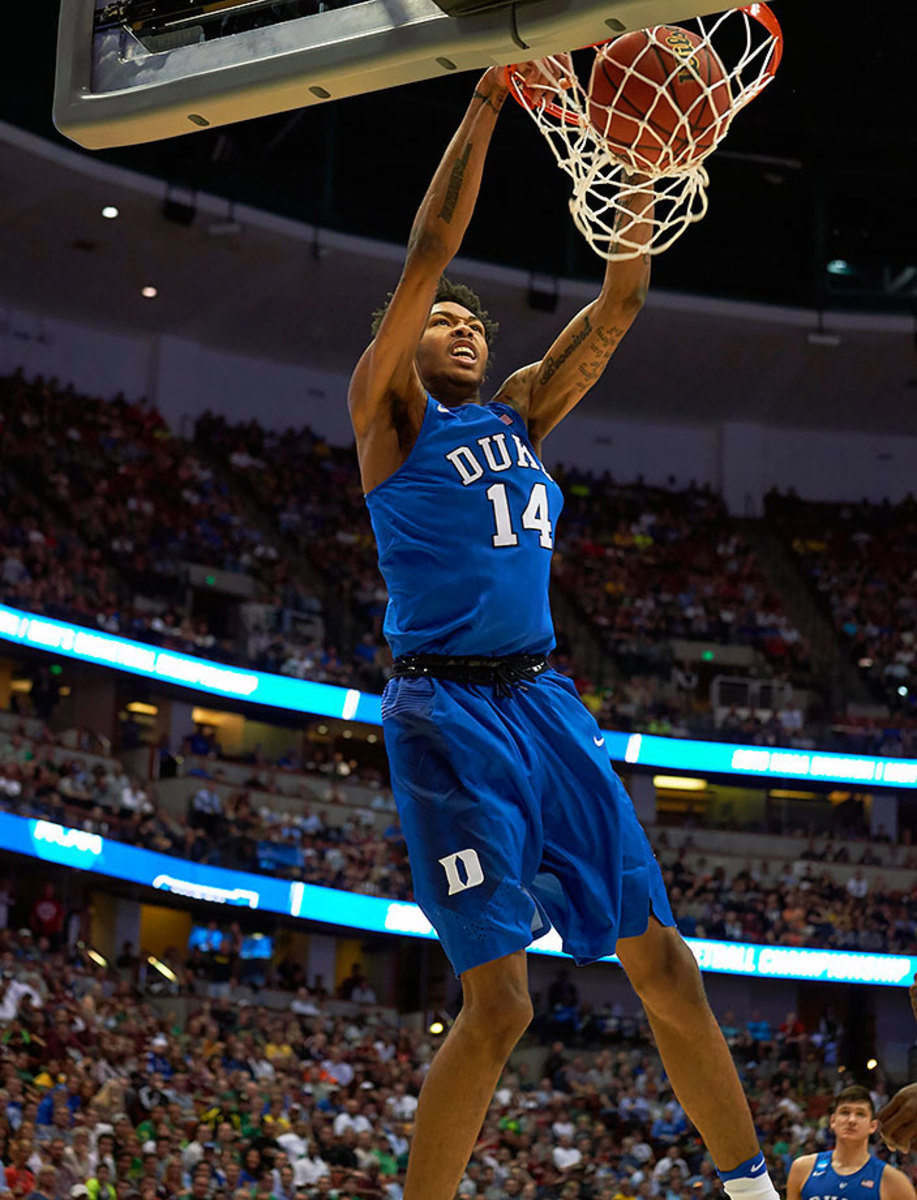
It sounds like the Sixers are almost-definitely going to draft Ben Simmons first. You can justify both players there, but I’m sticking with Ingram as the top overall prospect. He is not as physically prepared for the NBA, but Ingram’s combination of scoring instincts and shooting ability offer him a clear pathway to NBA success and lessen the risk involved in his development. In a draft where there are few “wow” prospects, Ingram offers the best combination of low risk and high reward.
#2: Ben Simmons, LSU — 6'10", 240 | Forward | Freshman
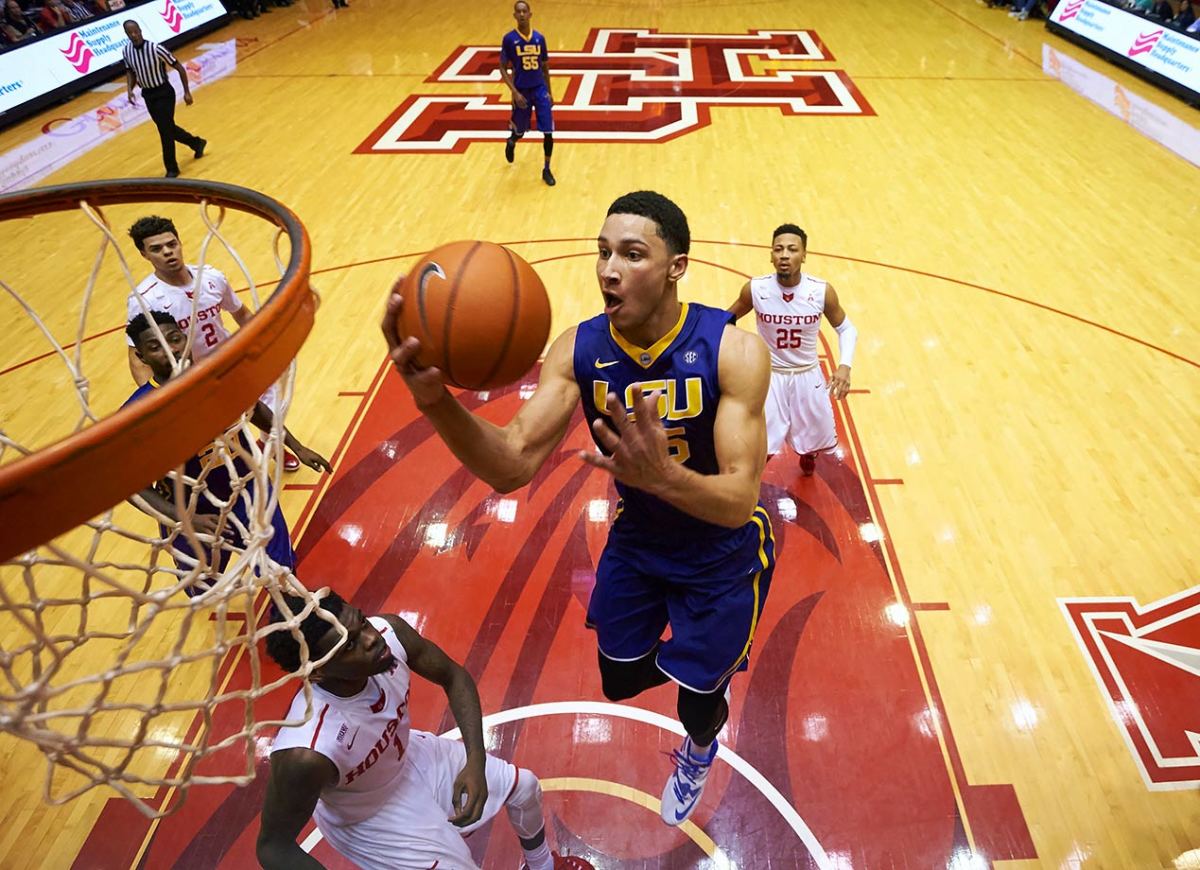
Simmons is one of the more unique talents to come along in decades, and all signs point to him being selected No. 1. He is not a scorer by trade, nor a highly instinctive or diversified one, but his innate passing ability at his size makes him special. Drafting him means committing to putting shooters around him and enabling him to do what he does best as a ballhandler. Building that roster also means investing time and assets, and enabling is a key word here for a kid whose approach to the game and handling of adversity has come into question. But if it all comes together right, he could be a spectacular player indeed.
#3: Dragen Bender, Maccabi Tel-Aviv — 7'0", 216 | Forward | 18 years old
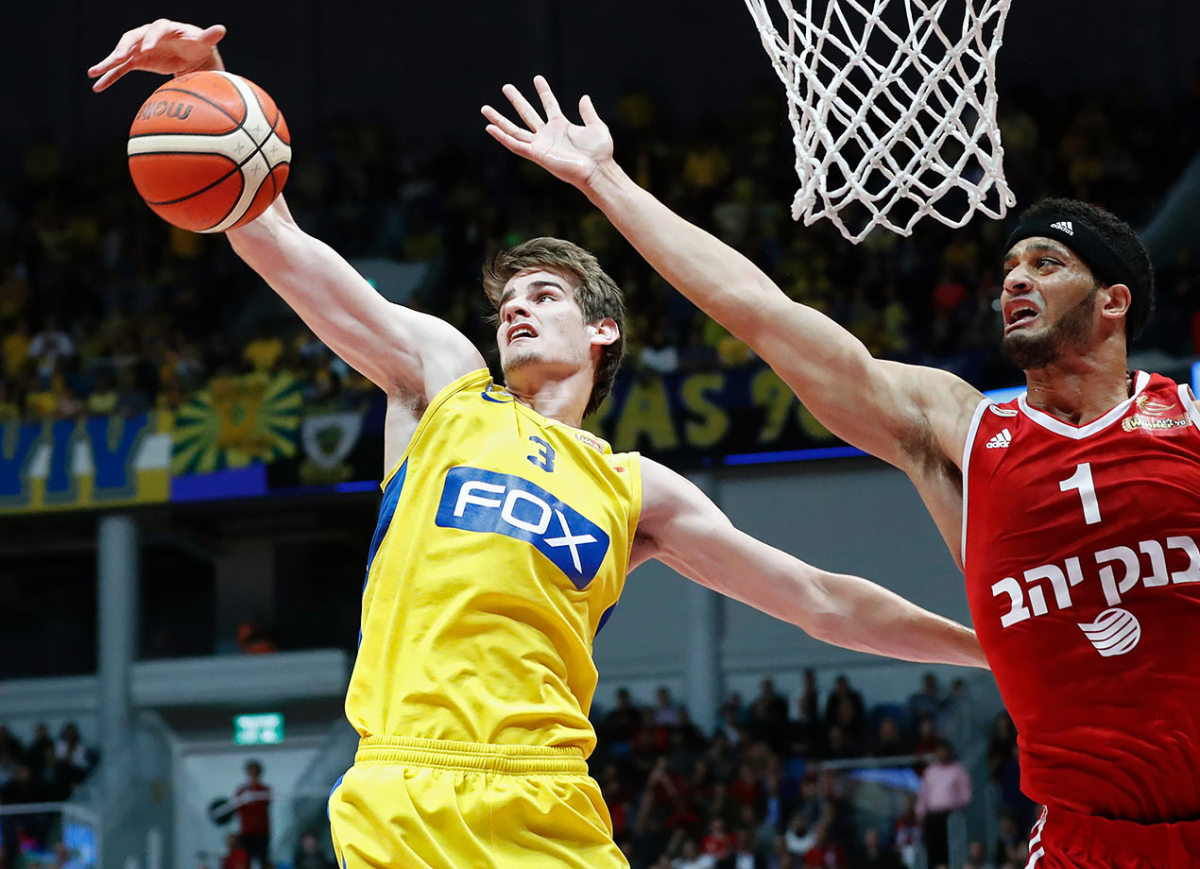
I loved the Toni Kukoc comparison that Luke Winn posed in SI’s recent feature on Bender. Bender’s not unlike Simmons in that sense as an oversized passer, although he doesn’t facilitate offense on the ball in the same fashion. With his playmaking, shooting potential and unselfishness at 7' 0", Bender has the talent to become a weird but fashionable offensive cog for a good team. As he grows into his body, his place on the floor defensively should become clearer. He’s the youngest player in the draft, too.
#4: Jamal Murray, Kentucky — 6,4", 205 | Guard | Freshman
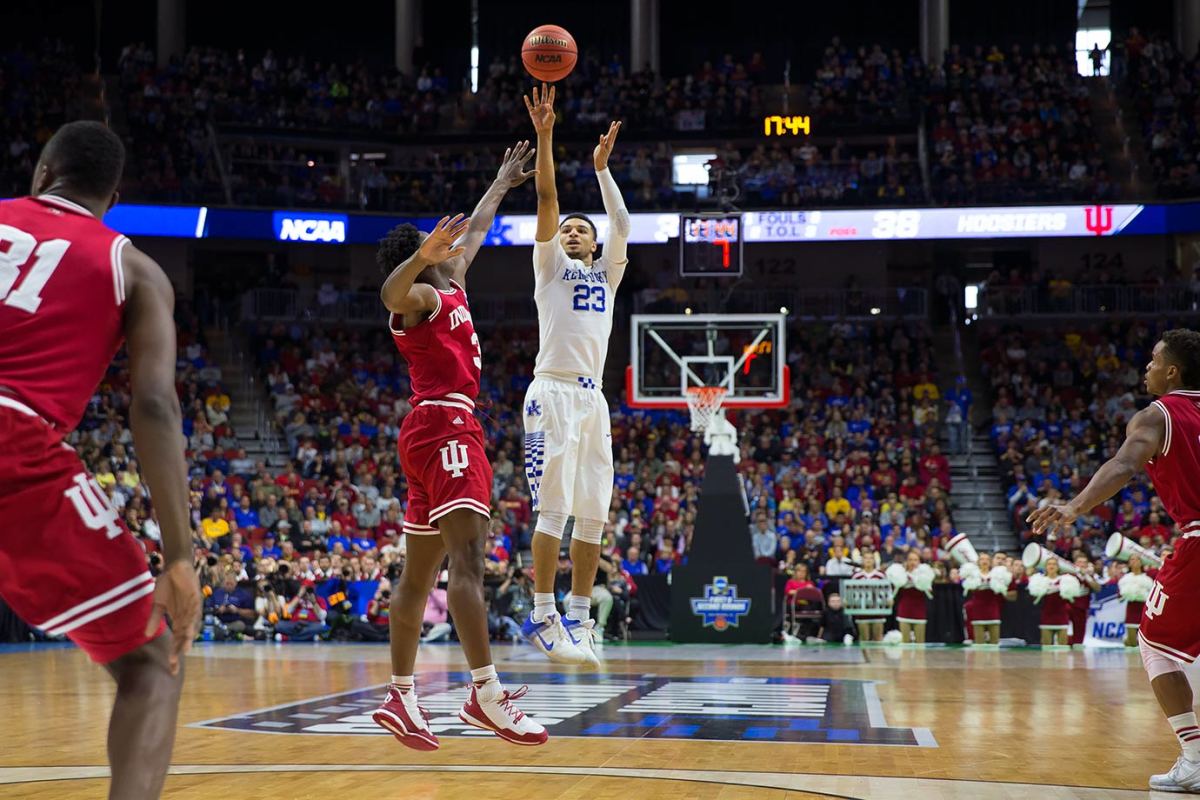
In a different draft class, Murray might go in the 10–15 range. He’s not the most athletic guard in the class, but he gets buckets and scouts love his confidence. His college production, shooting ability and the fact he won’t turn 20 until February give him plenty of value for teams seeking a long-term upside play. His craftiness and ability as a secondary playmaker should let him play a bit of both guard spots. He may slip a little on draft night given teams’ guard depth from picks 3–5, but not too much further.
#5: Kris Dunn, Providence — 6'4", 220 | Guard | Senior
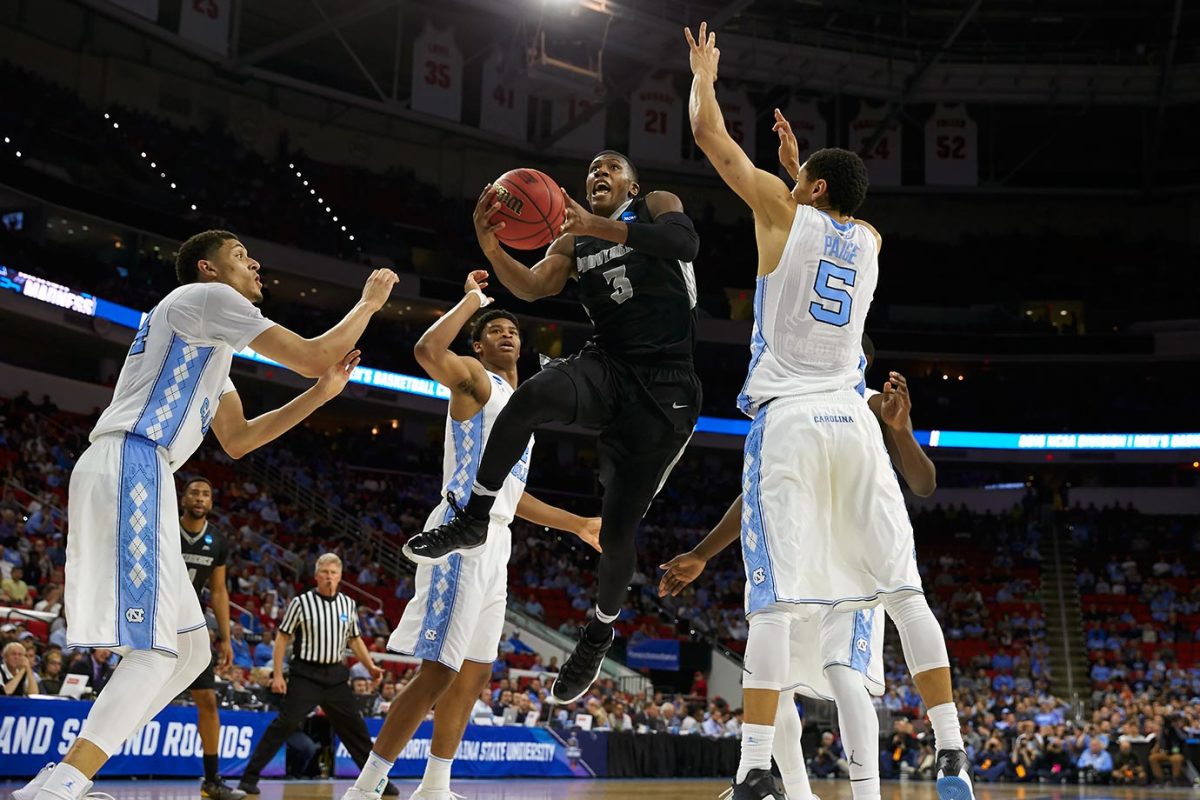
Rumors are heavily linking Dunn to the Timberwolves, and that makes a lot of sense, despite the presence of Ricky Rubio. He’s a Tom Thibodeau type. Dunn should be a plus defender who can run the offense and get to the rim. He’s a great athlete and is one of the most NBA-ready players in the draft. What exactly is Dunn’s ceiling will probably be tied to the development of his three-point shot. He’s the best point guard available, regardless.
#6: Henry Ellenson, Marquette — 6'10", 245 | Forward | Freshman
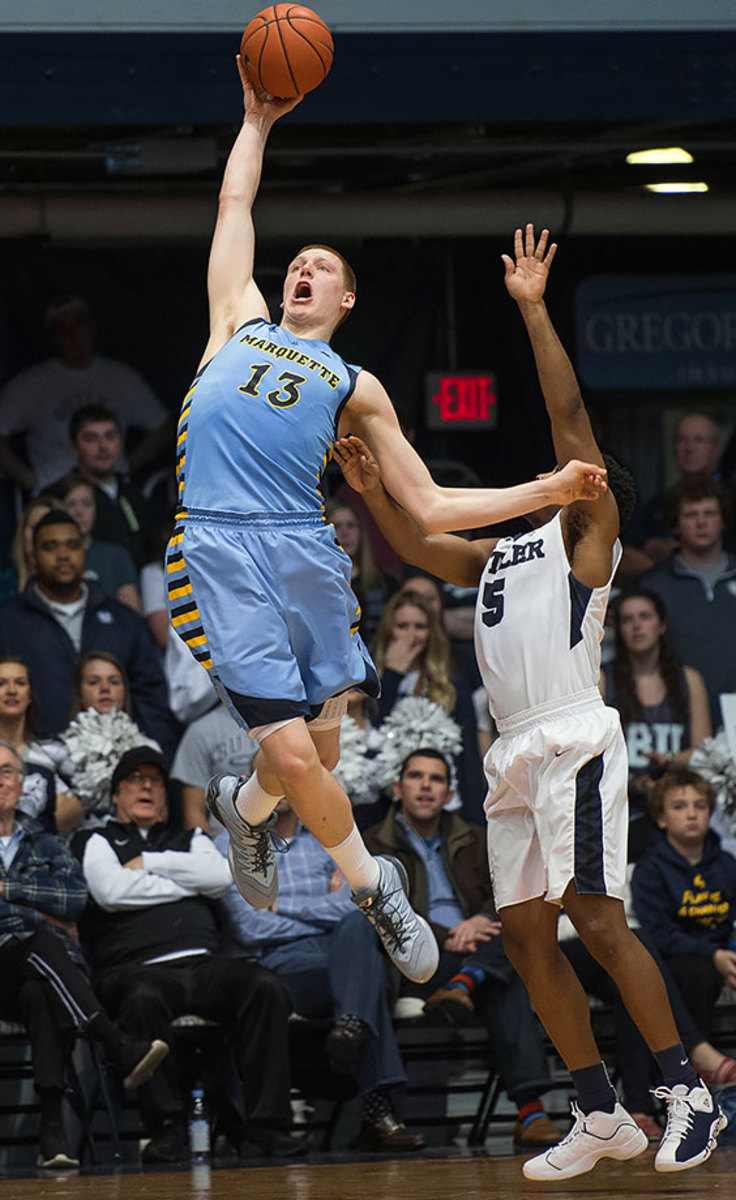
Ellenson has a very wide range of lottery outcomes, probably more than most in what’s already shaping up as an unpredictable first round. There’s no denying his talent offensively, distinguished by his mix of low-post scoring, jump shooting and ballhandling skills. The knock here is he’s not an explosive athlete nor a strong lateral defender, but if you’re playing him at center it could mitigate some of those concerns. True stretch five-men are hard to find.
#7: Buddy Hield, Oklahoma — 6'4", 215 | Guard | Senior
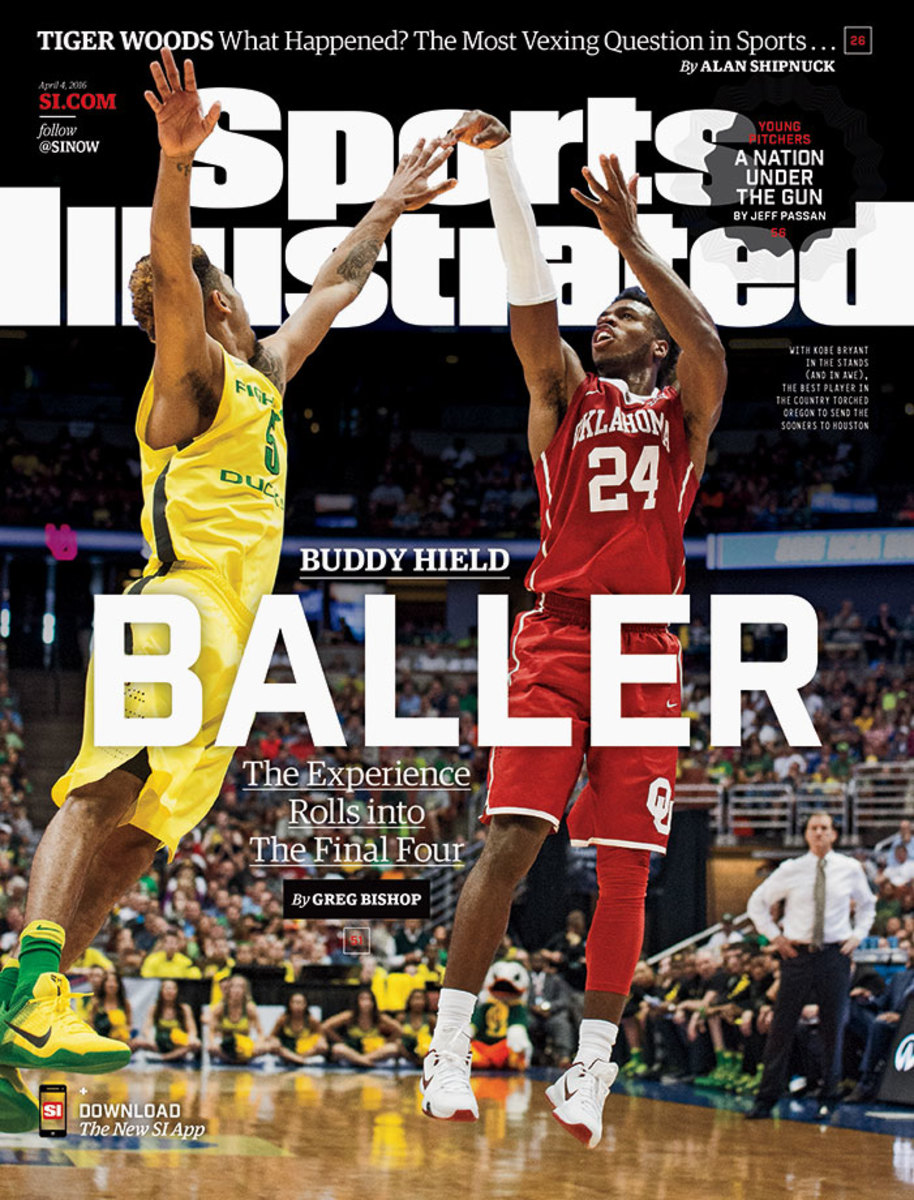
Hield apparently made 85 out of 100 threes in a recent Celtics workout and also told reporters he thinks he’s going to the Lakers. Neither of those two things matter much—we already knew he could shoot, and a leap into the top two would be stunning. Regardless, the elite three-point stroke and an otherwise regular skill-set gives the J.J. Redick comps credence. Though he’s 22 already, the development he showed over four college seasons actually plays in his favor with some scouts. Hield should be able to help you right away.
#8: Marquese Chriss, Washington — 6'10", 233 | Forward | Freshman
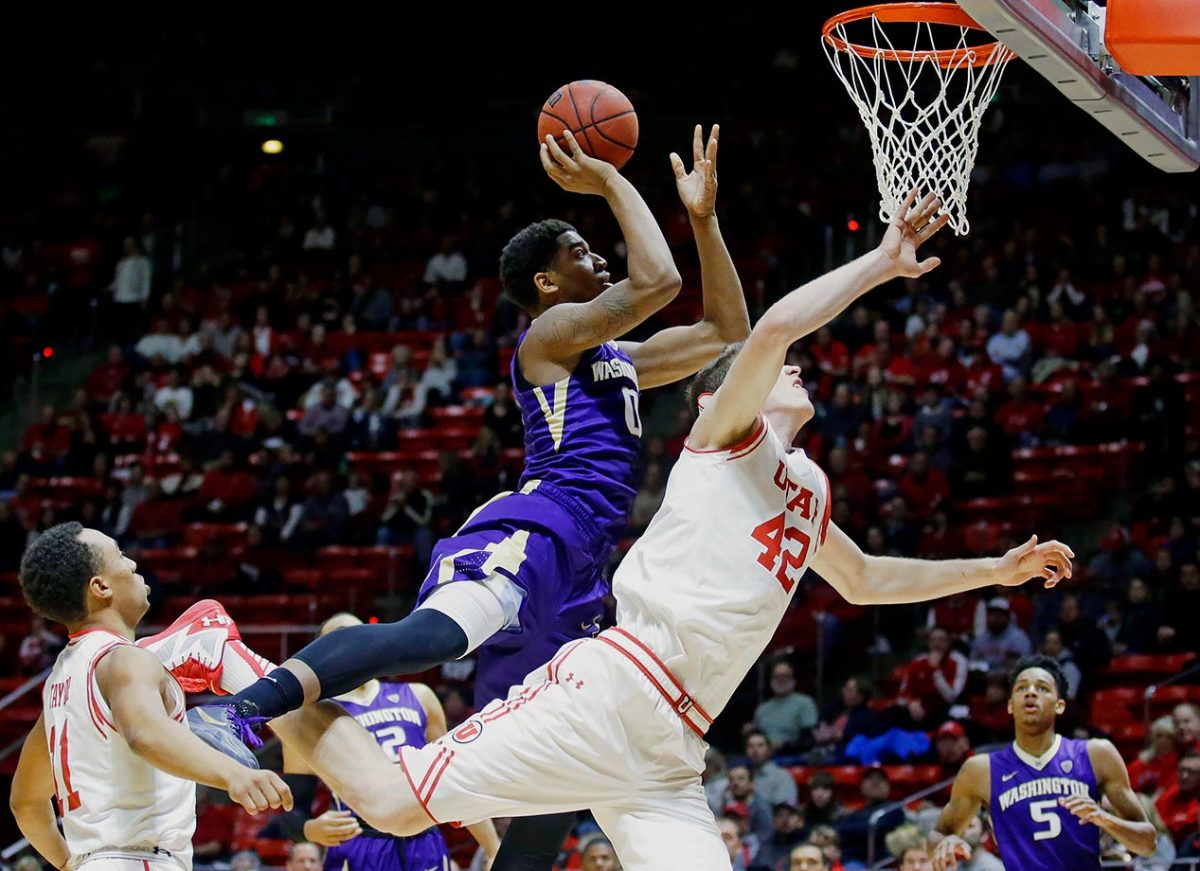
Some mocks have Chriss going in the top five based on his potential alone. That’s justifiable, but around here feels like more of his range. He’s got almost every tool you can ask for, but also hadn’t played much high-level basketball before coming on late at Washington. He almost definitely doesn’t know how good he can be. We’ve seen guys with similar profiles and better pedigrees float in and out of the league. As a stretchy, bouncy, scoring four-man, Chriss will be a sexy pick, but he’ll have a greater learning curve than most.
#9: Jakob Poeltl, Utah — 7,1", 240 | Forward/Center | Sophomore
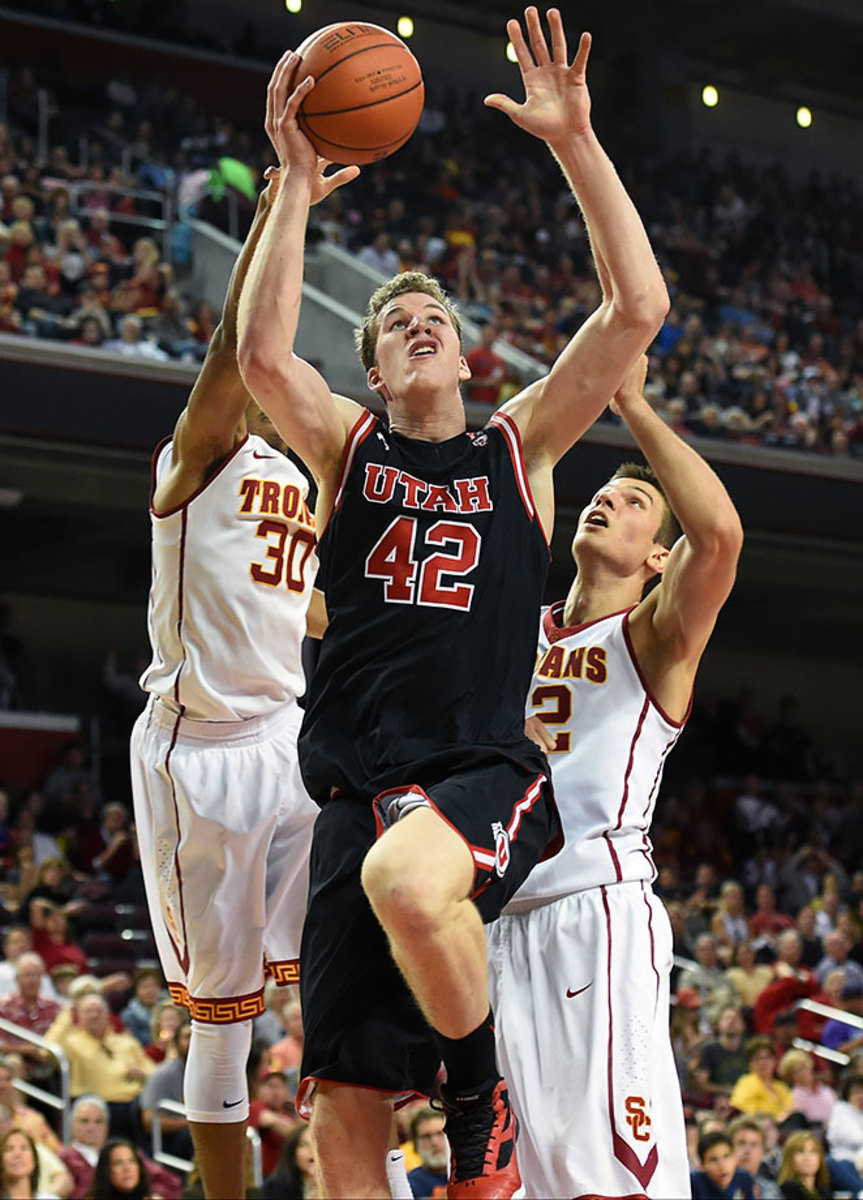
Poeltl’s a throwback big, and it’s almost working against him in the court of public opinion. Also working against him is the fact that not many teams in the top 10 really need a center. But look, he’s massive and has a well-developed post game, and there will be a place for those types of guys even as the league begins to skew small. He got noticeably better from freshman to sophomore year of college. Big men always take time. He’s a fairly safe pick in my book.
#10: Jaylen Brown, Cal — 6'7", 223 | Forward | Freshman
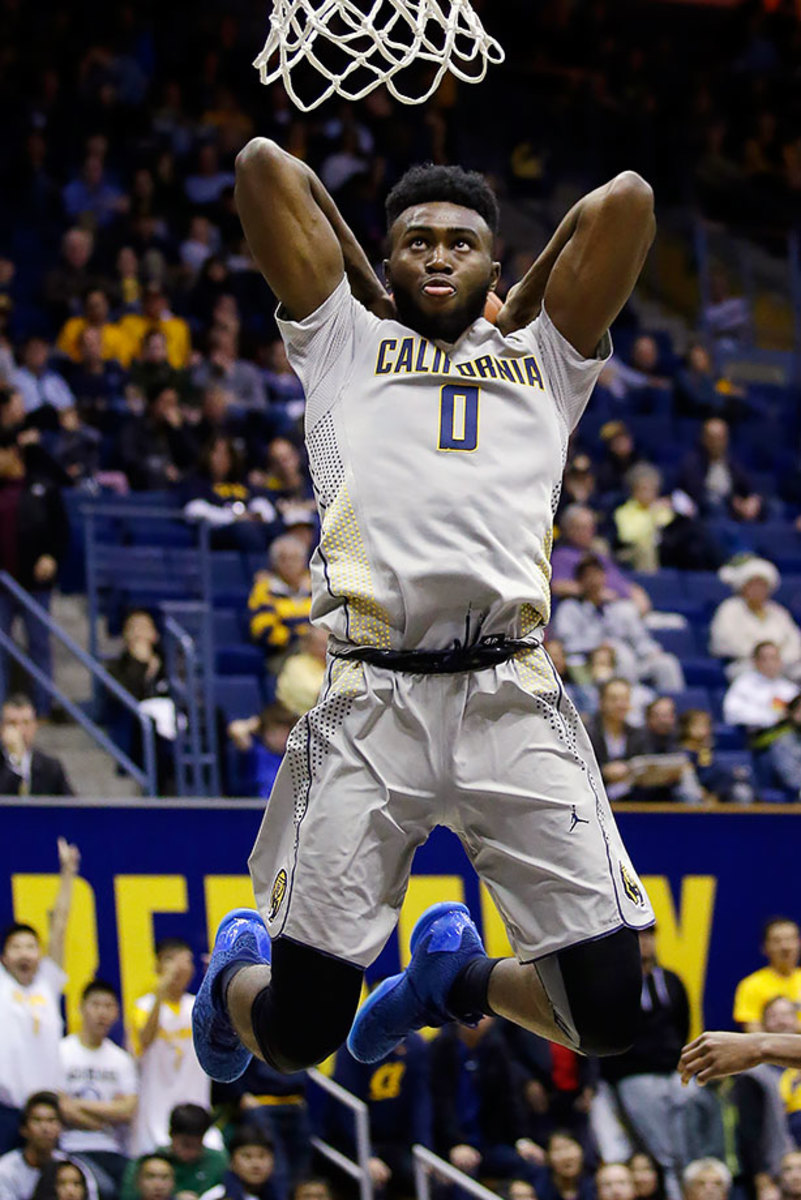
Something here just doesn’t quite move the needle like it should. Brown has every athletic tool in the book, but had a well-publicized rough go at Cal and probably lacks the basketball acumen to contribute early on. Big potential means he could conceivably go in the top five, but the opportunity cost could be high. He’s a smart kid, but can also overthink the game. One scout put it like this: “At least Gerald Green came in with a wet jump shot.”
#11: Timothe Luwawu, Serbia — 6'7", 205 | Guard/Forward | 20 years old
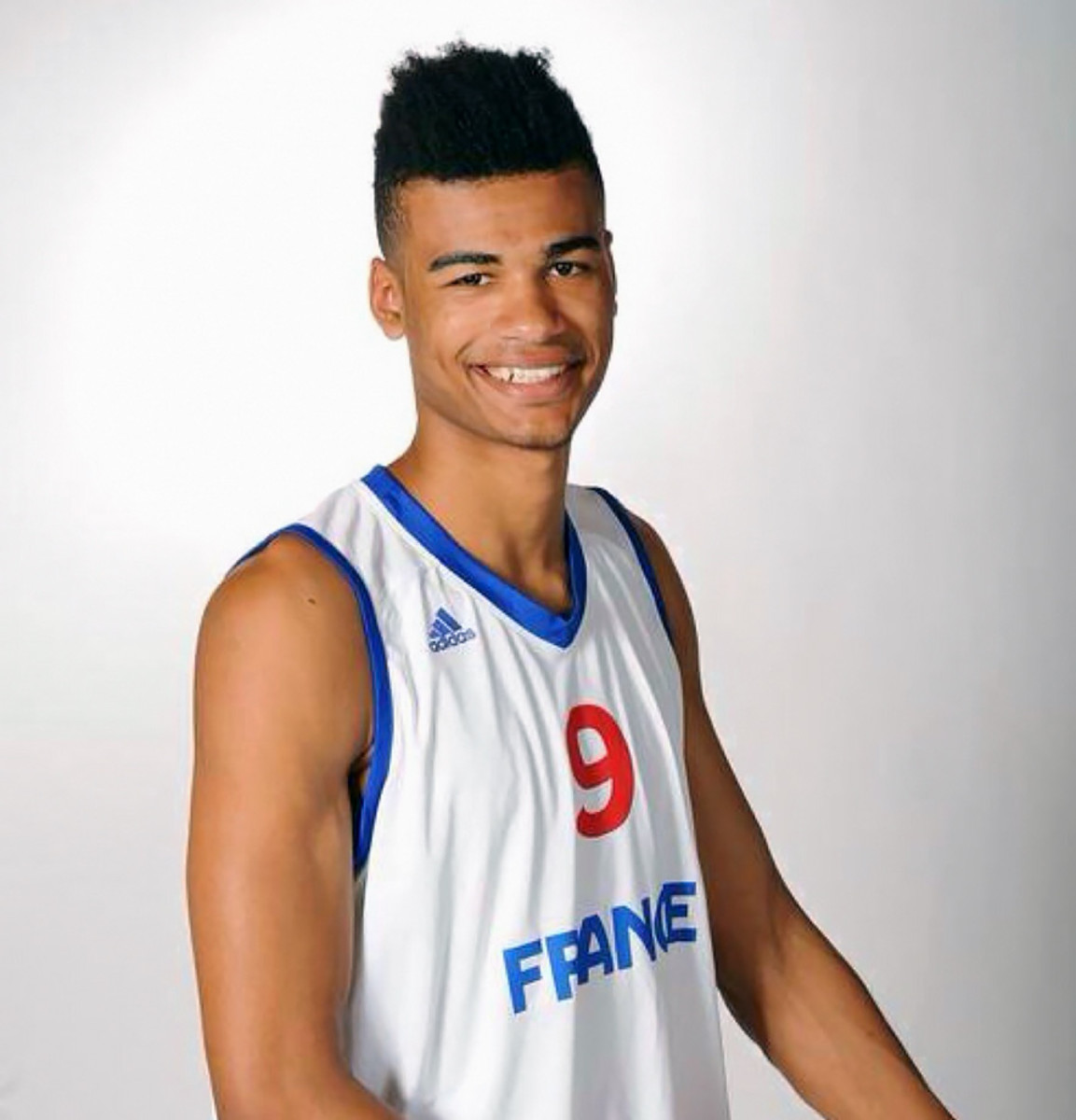
Two-way wings are always a valuable commodity, and Luwawu’s one of the best ones in a thin class. He’s a highlight-caliber athlete with a wingspan over 7’0” feet and shouldn’t slip too far from here. Scouts I spoke with felt he was closer to NBA-ready than most. Luwawu’s got a more diverse offensive game than just his dunk reel, and has made big strides in the past year. There’s a lot to like with him.
#12: Deyonta Davis, Michigan State — 6'10", 240 | Forward | Freshman
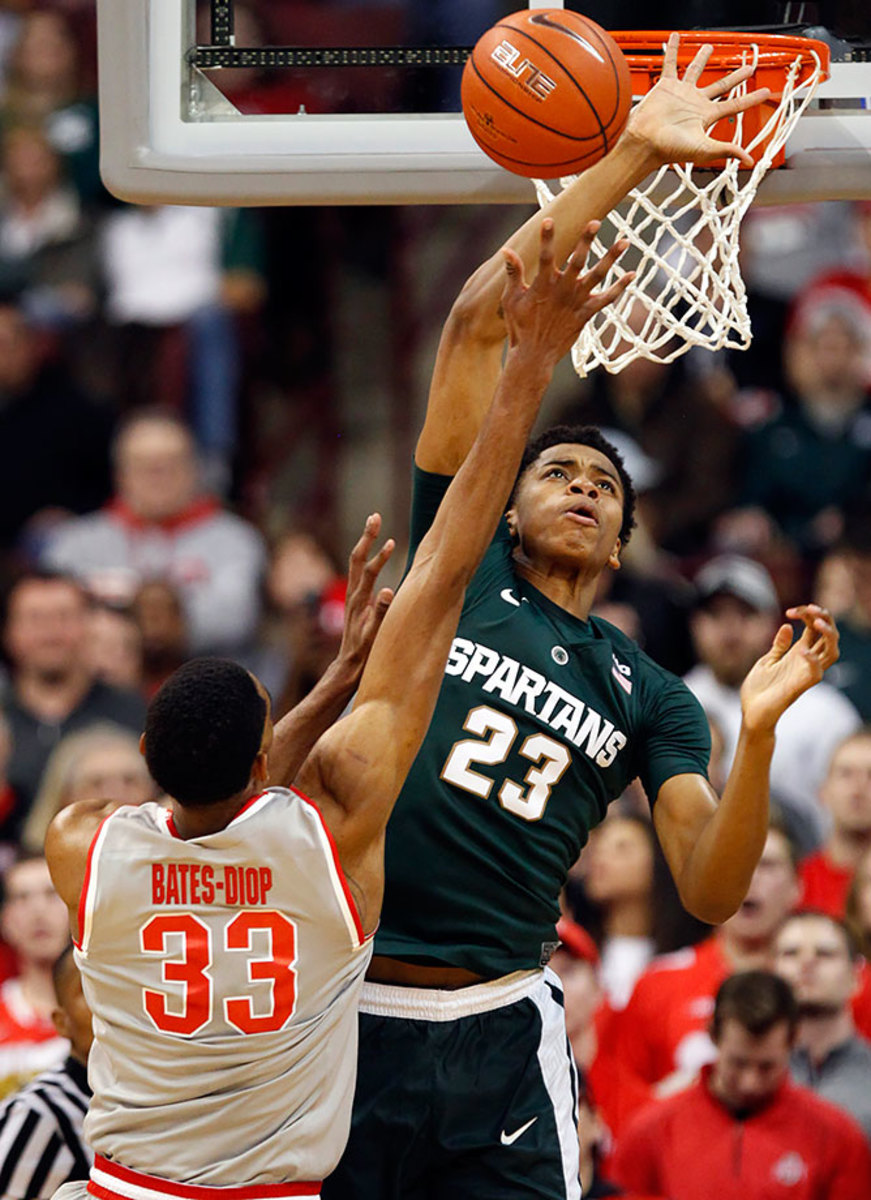
Everything is about projection with Davis. His length, quick feet and great shot-blocking instincts portend defensive success. With improving touch and a semblance of a jump shot, you can mold him on offense, too. He played a good bit for Tom Izzo, which matters, but there’s not much of a sample size or history of production to bank on. He’s a long way away from ready, but then again, there are a lot of guys in that same boat this year.
#13: Domantas Sabonis, Gonzaga — 6'10", 240 | Forward | Sophomore
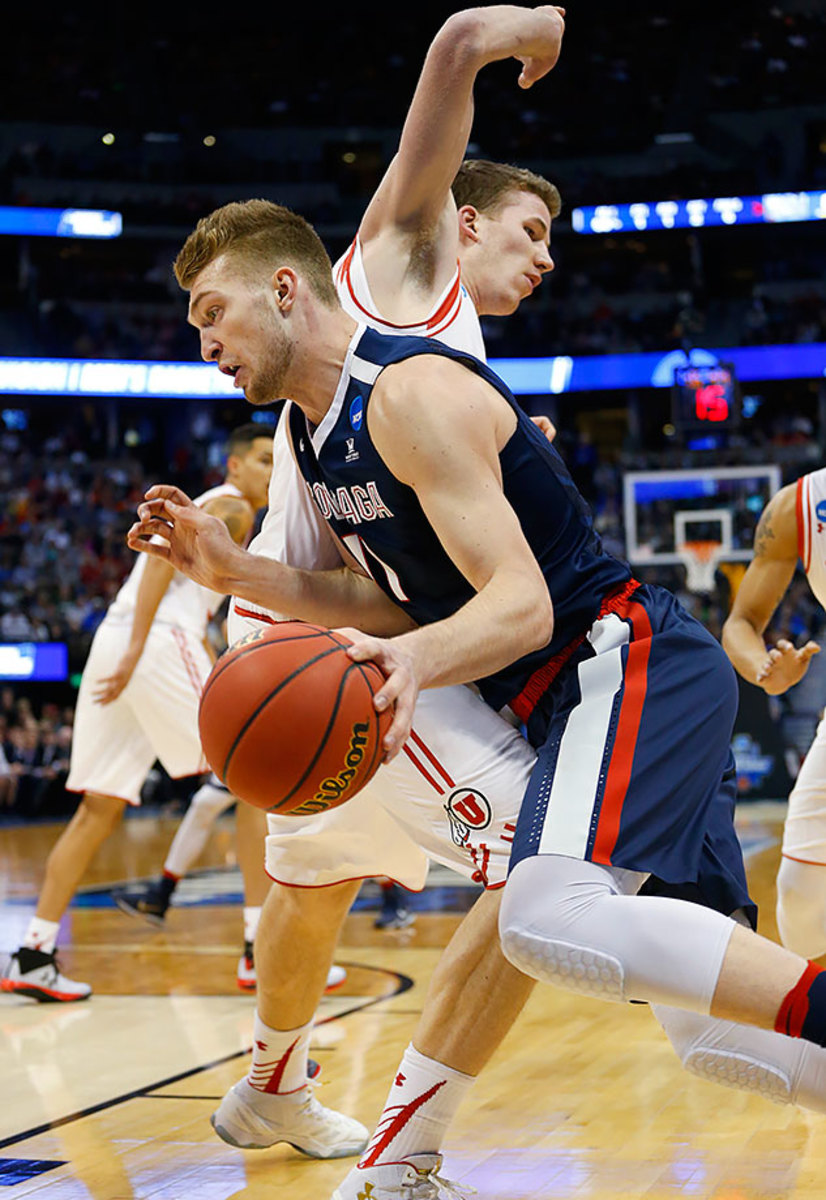
Sabonis plays exactly how you’d think the son of a Hall of Fame European big man would. Great fundamentals, soft hands, high motor and IQ. His Gonzaga production backs things up well. The issue is his lack of explosion and length, which raises questions about exactly what translates at the next level. Mid-first round and onward, Sabonis offers some safe value. There’s speculation he has a promise from a team in the late lottery.
#14: Furkan Korkmaz, Anadolu Edes — 6'7", 175 | Guard | 18 years old
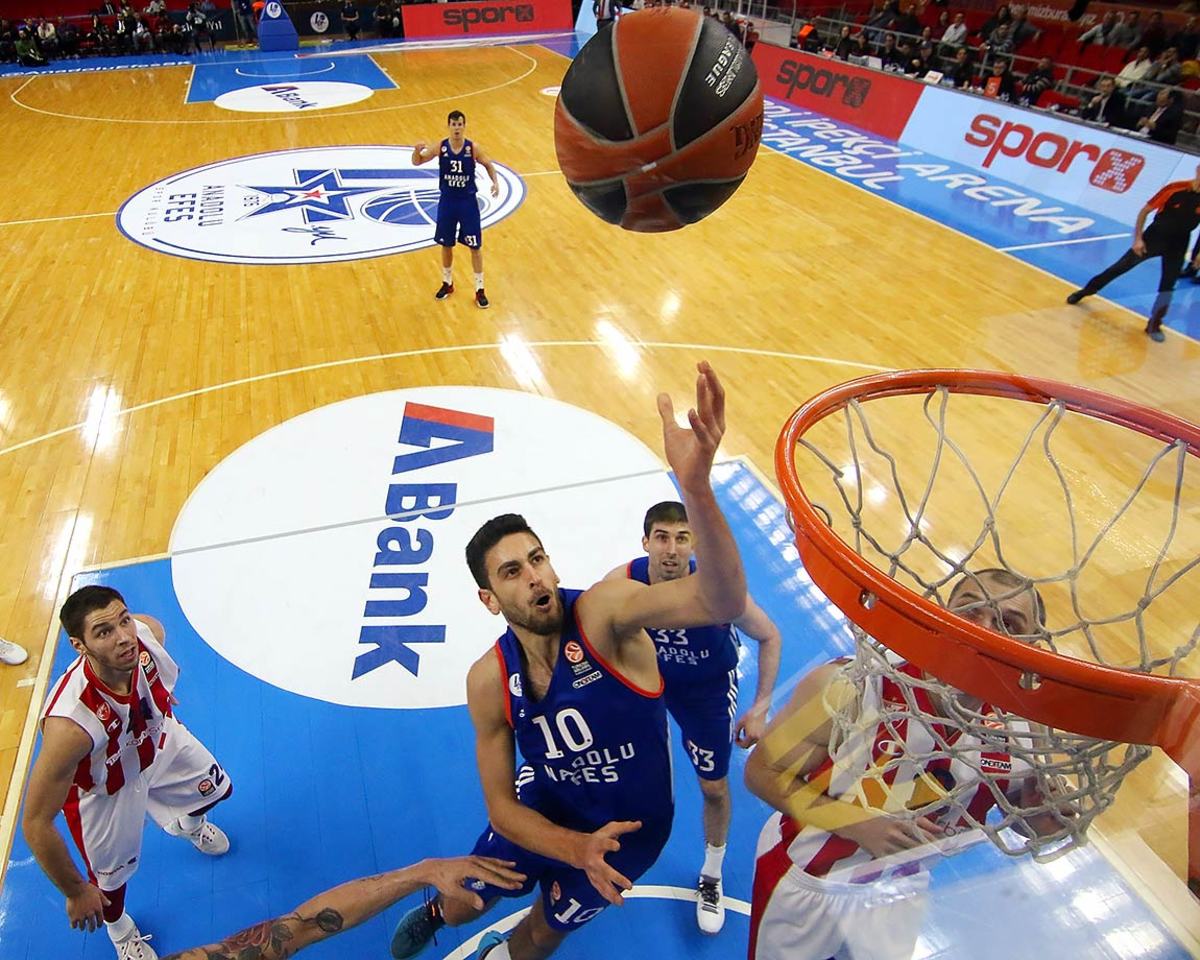
The combination of athleticism, shooting and youth make Korkmaz a very interesting stash candidate. He’s starred for Turkey at youth levels and shown flashes while playing with Efes’s senior team, but it’s worth noting how relatively small his sample size is against elite competition. He’s a long-term investment, not an immediate-impact selection.
#15: Skal Labissiere, Kentucky — 6'11", 216 | Center | Freshman
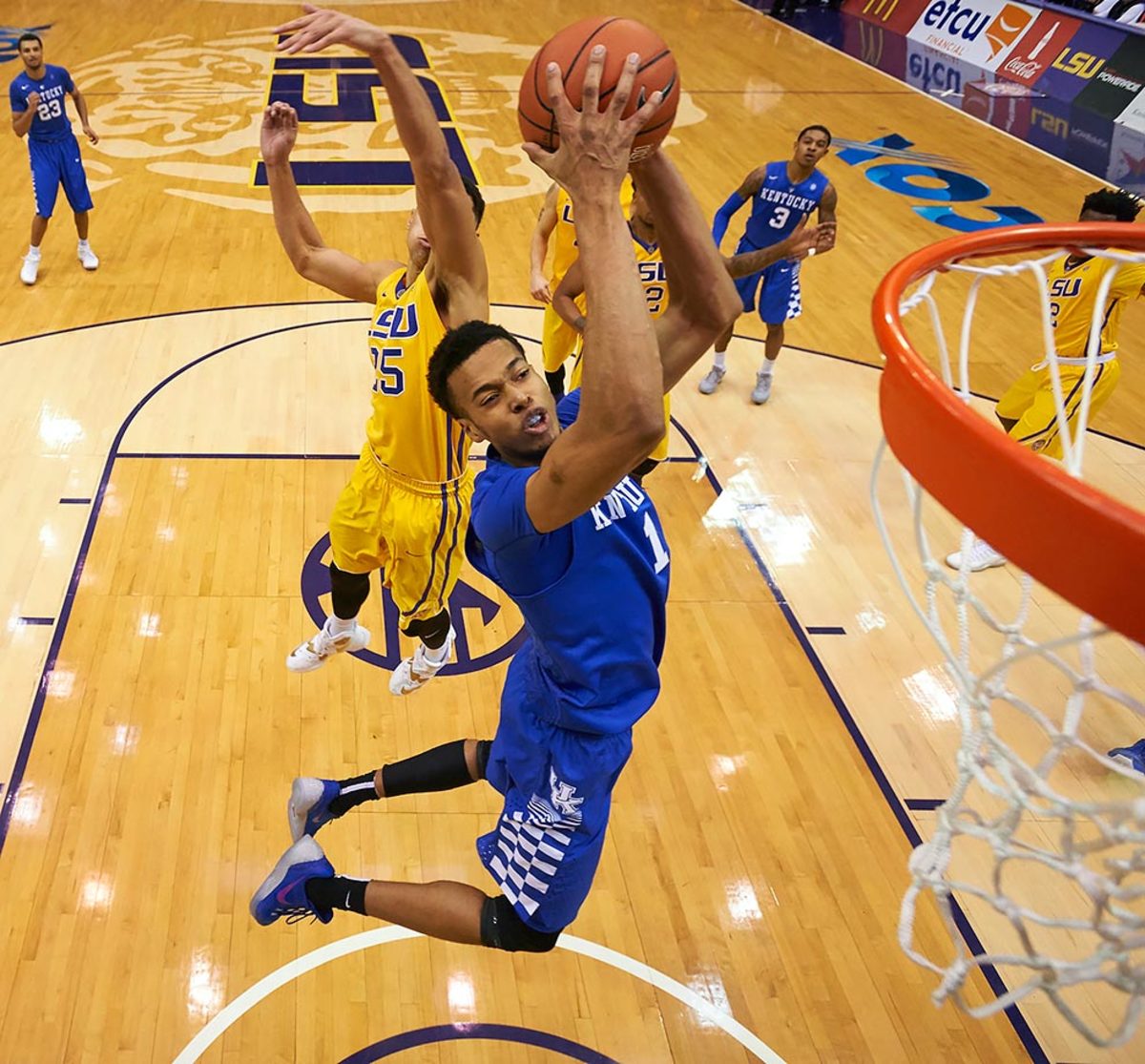
I have a hunch Labissiere slides toward the late teens on draft night. There’s just too much riding on projection with an older prospect who’s behind developmentally and with little history of consistent production. He’s big and might be able to shoot it and block shots, but he’s already 20 and has filling out left to do. Labissiere missed his junior season of high school with a back injury that has left lingering questions for teams. He could be a worthwhile gamble for teams with the time and resources to develop him. But, as one scout put it: “It’s really hard to play in the NBA not knowing how to play basketball.”
#16: Denzel Valentine, Michigan State — 6'6", 210 | Guard | Senior
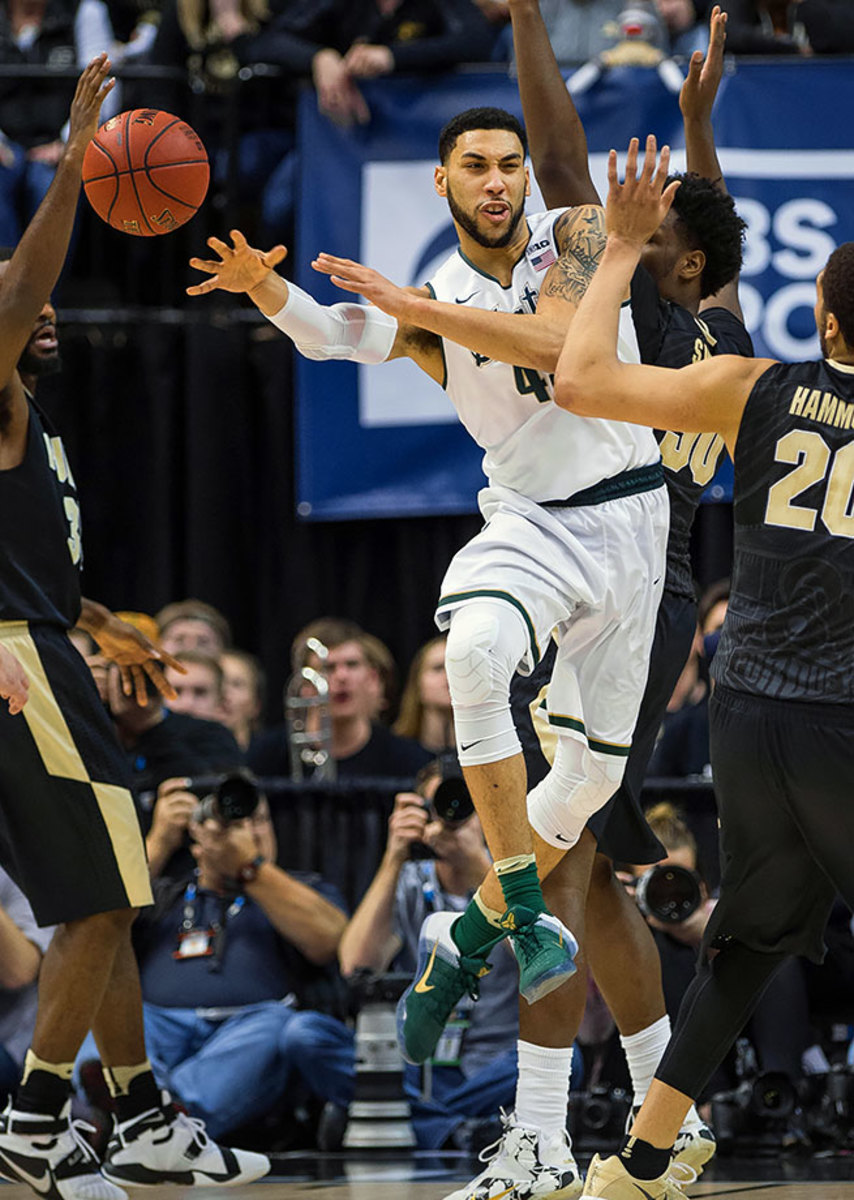
Valentine’s production (19.2 points, 7.5 rebounds, 7.8 assists) was outstanding last season, and his feel and playmaking help balance the lack of eye-popping athletic measurables. He won’t play the same ball-dominant role as a pro, but you’re buying him as a secondary ballhandler who can space the floor and hoping he catches up defensively. Teams have concerns about the condition of his right knee, which could cause him to slip a bit on draft night.
#17: Demetrius Jackson, Notre Dame — 6'1", 220 | Guard | Junior
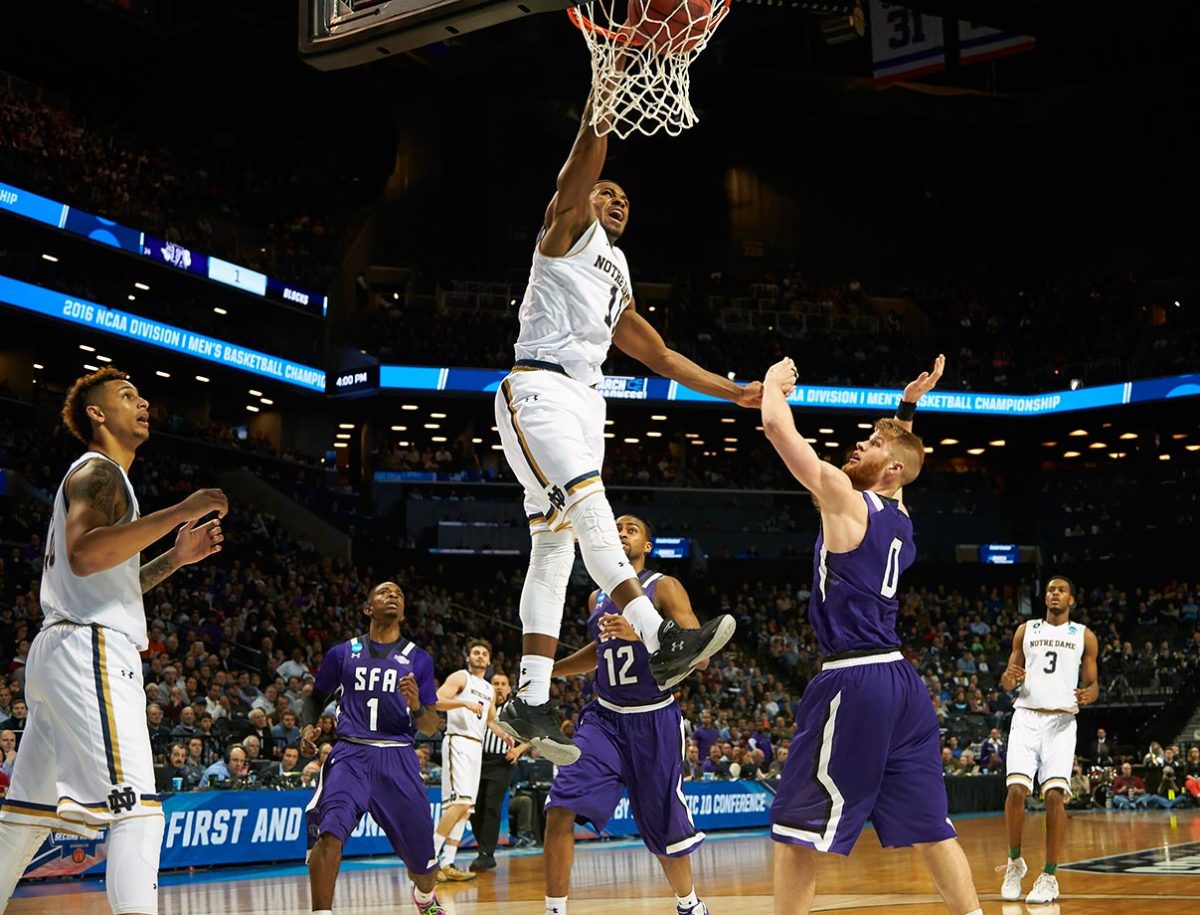
Jackson is tough and extremely athletic and has a good chance to be the second point guard drafted. He’s coming off a strong year at Notre Dame, but his shooting percentages dipped as he shouldered more of the scoring load. Skill-wise, he’s somewhat a master of none. His actual production will have to catch up to his tools. Scouts wonder if he’s cut out to be more than a reserve long-term, but he has decent value in this range.
#18: Wade Baldwin IV, Vanderbilt — 6'3", 195 | Guard | Sophomore
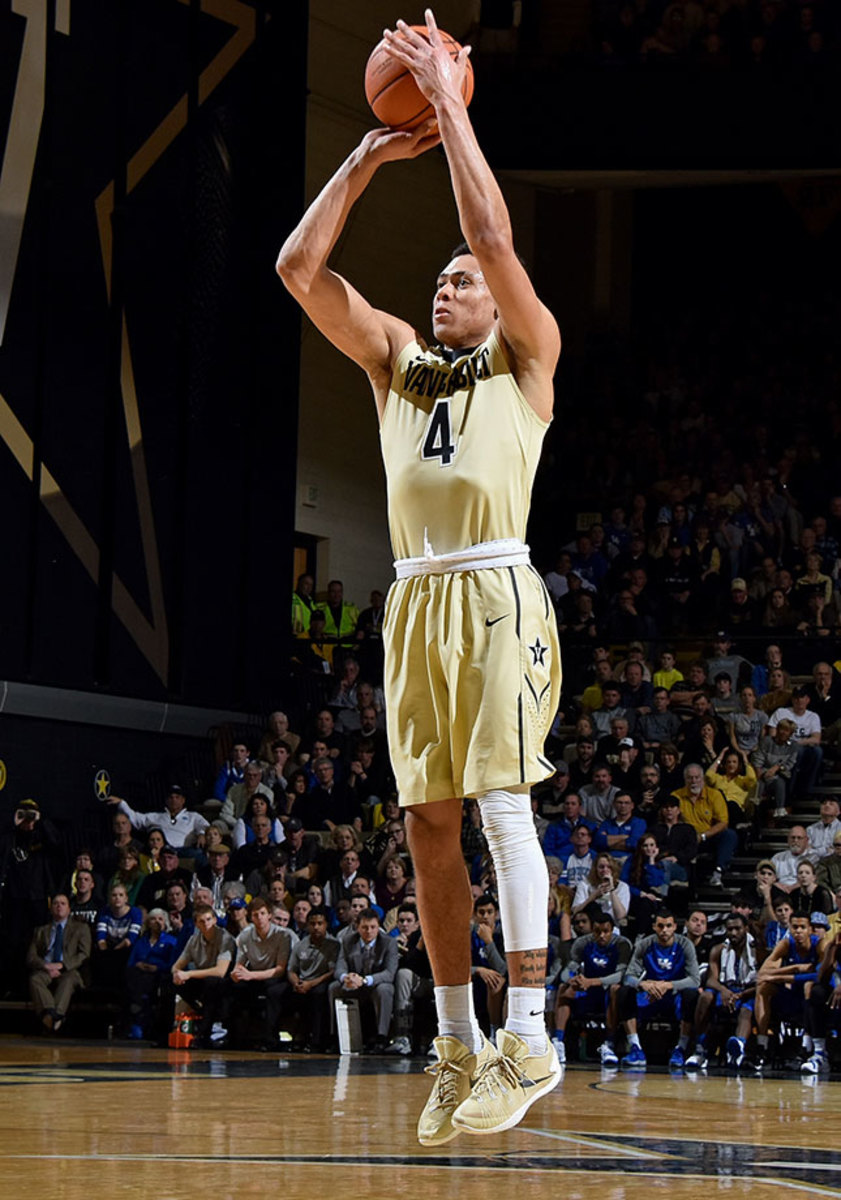
Baldwin’s combine measurements—6' 4" with a 6' 11" wingspan—certainly validated his case as a defensive stopper with a chance to be more. His offense hasn’t sold some scouts, and he’s not a natural point guard in the purest sense, but he can hit a shot and could perhaps be better suited for a lower-usage role. Multiple scouts have cited his tendency to overthink and get in his own way. Still, his defensive potential gives him a relatively high floor.
#19: Ante Zizic, Cibona Zagreb — 6'11", 240 | Center | 22 years old
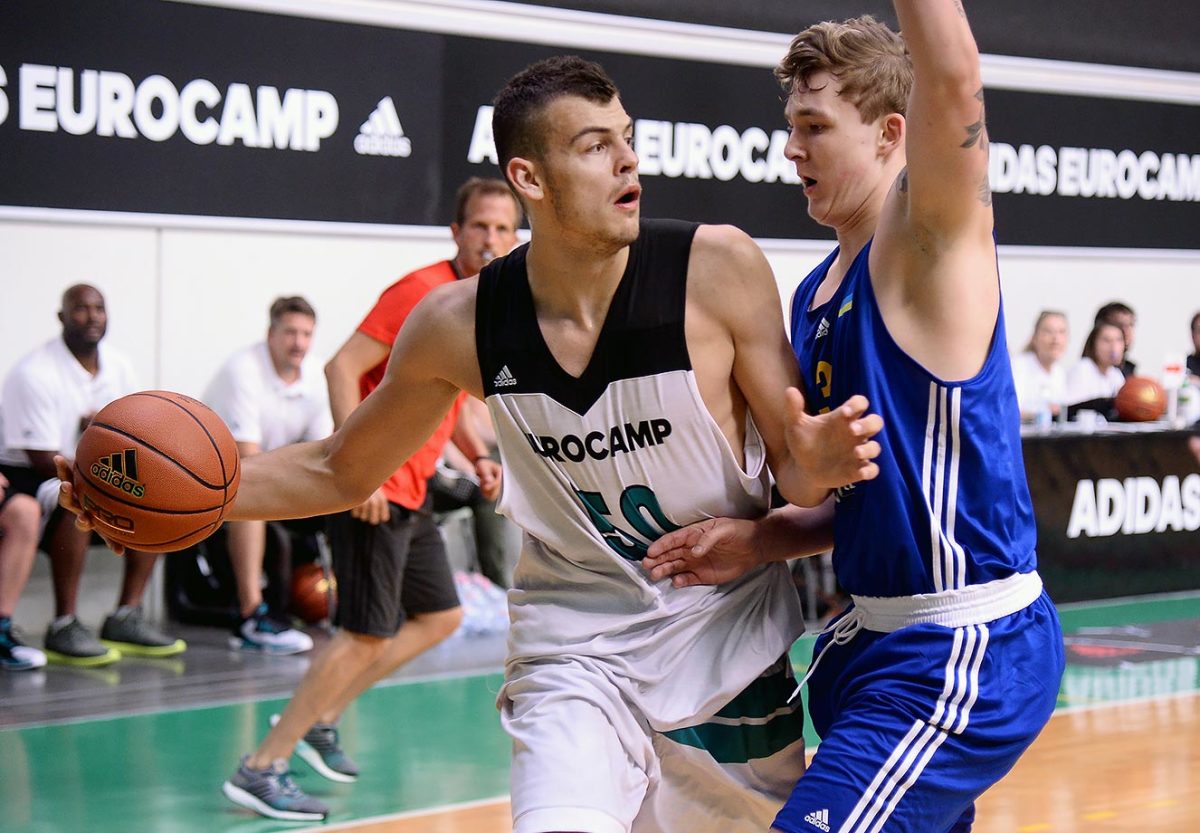
Near the top of the list among stash candidates is Zizic, a garbage-man type who knows his role, works hard on the glass and is physically mature enough to accomodate his preferred style. Impressive production as a teenager in the Adriatic League (13 points, eight rebounds per game) definitely stands out. Zizic’s skills have a ways to go, but it’s easy to see him as a nice complementary piece on the inside.
#20: Dejounte Murray, Washington — 6'5", 170 | Guard | Freshman
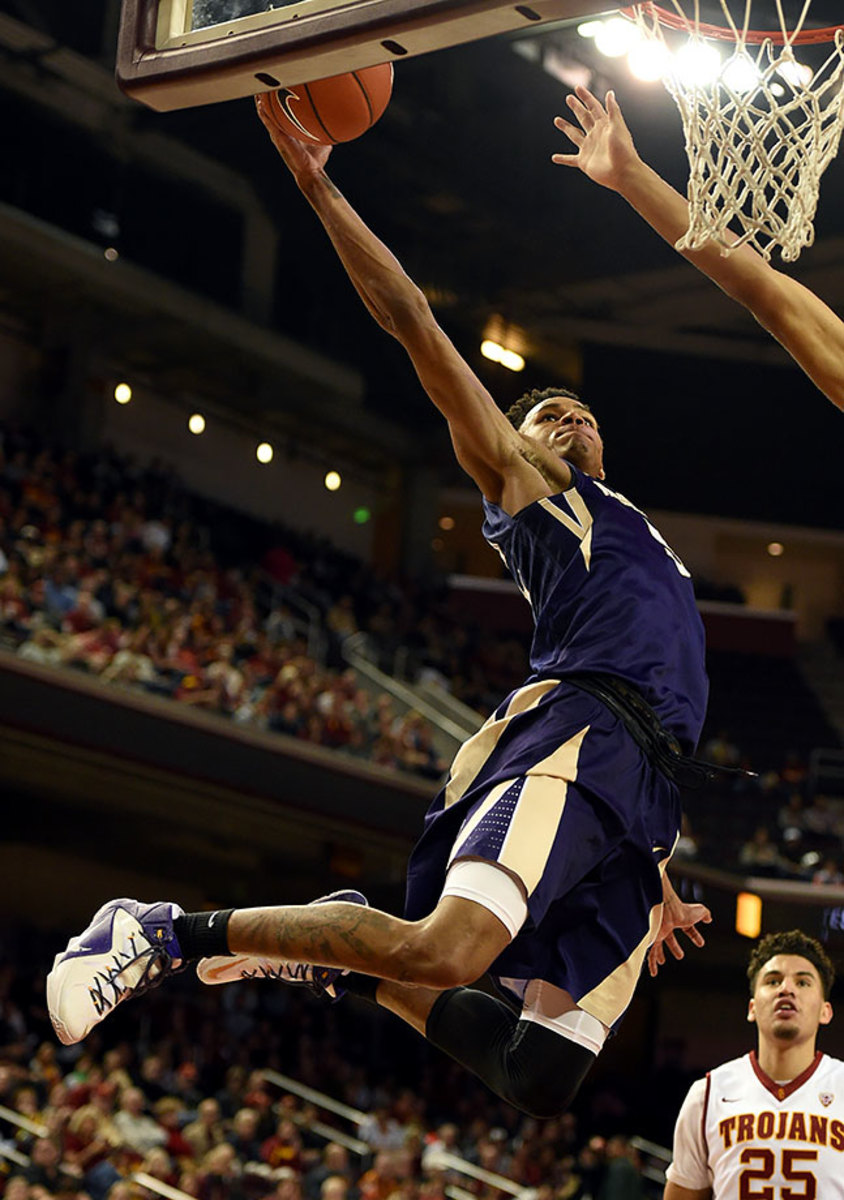
One optimistic scout calls Murray, simply, “a baller.” “He does some things you can’t teach,” another says. This is the crux of his intrigue, and while he’s going to need some time, he’s a definite upside play as a scoring combo guard. His shot is a work in progress. On talent and projection you can justify him in the late lottery, but his range appears pretty wide.
#21: Taurean Prince, Baylor — 6'7", 220 | Forward | Senior
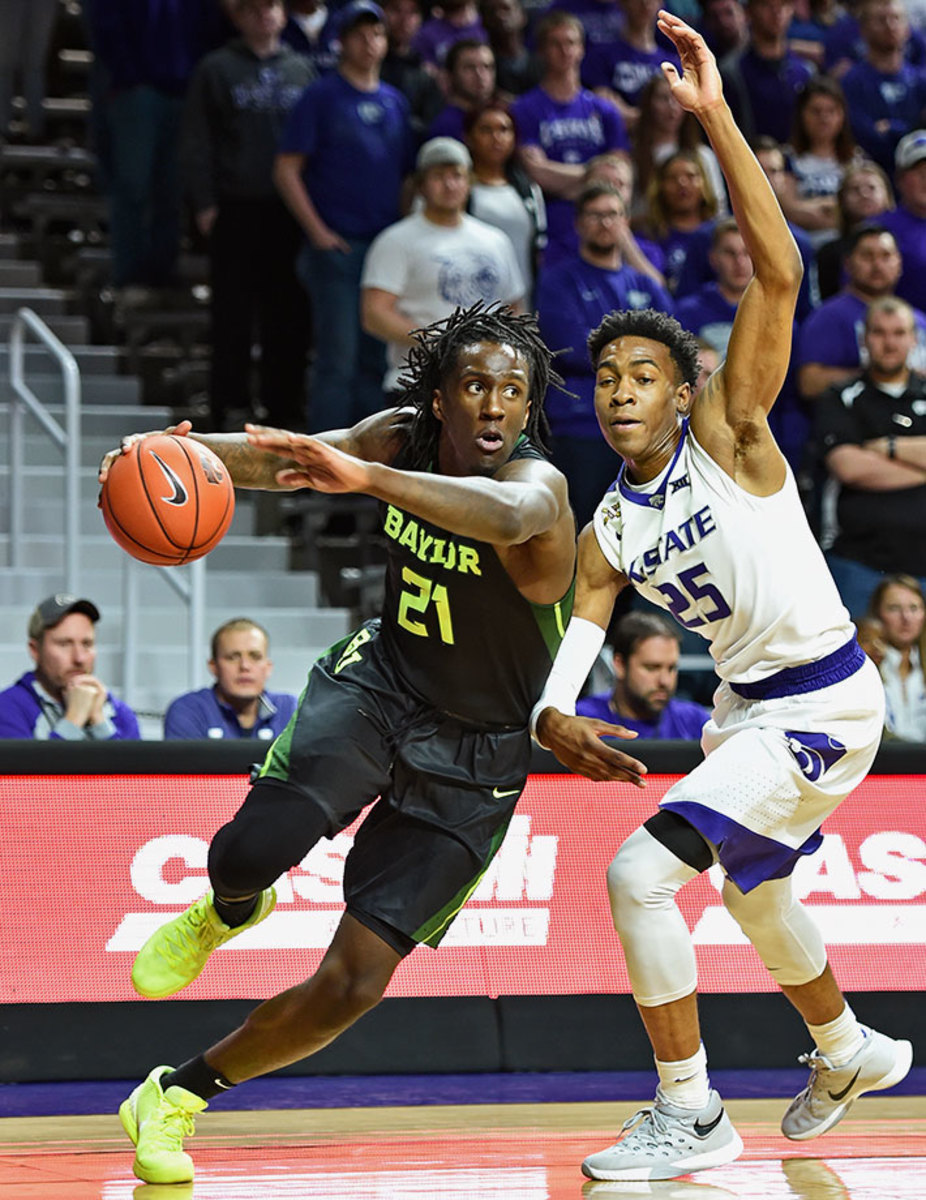
Prince did a little bit of everything for Baylor, with a game one scout described as “unconventional.” He’s long and strong and should be able to cut it athletically, and while he struggled some as a senior when tasked with making plays on the ball, odds are he won’t be asked to do as much of that in the NBA. Although he lacks an elite skill to hang his hat on, he should be able to step into a rotation pretty quickly.
#22: Tyler Ulis, Kentucky — 5'9", 160 | Guard | Sophomore
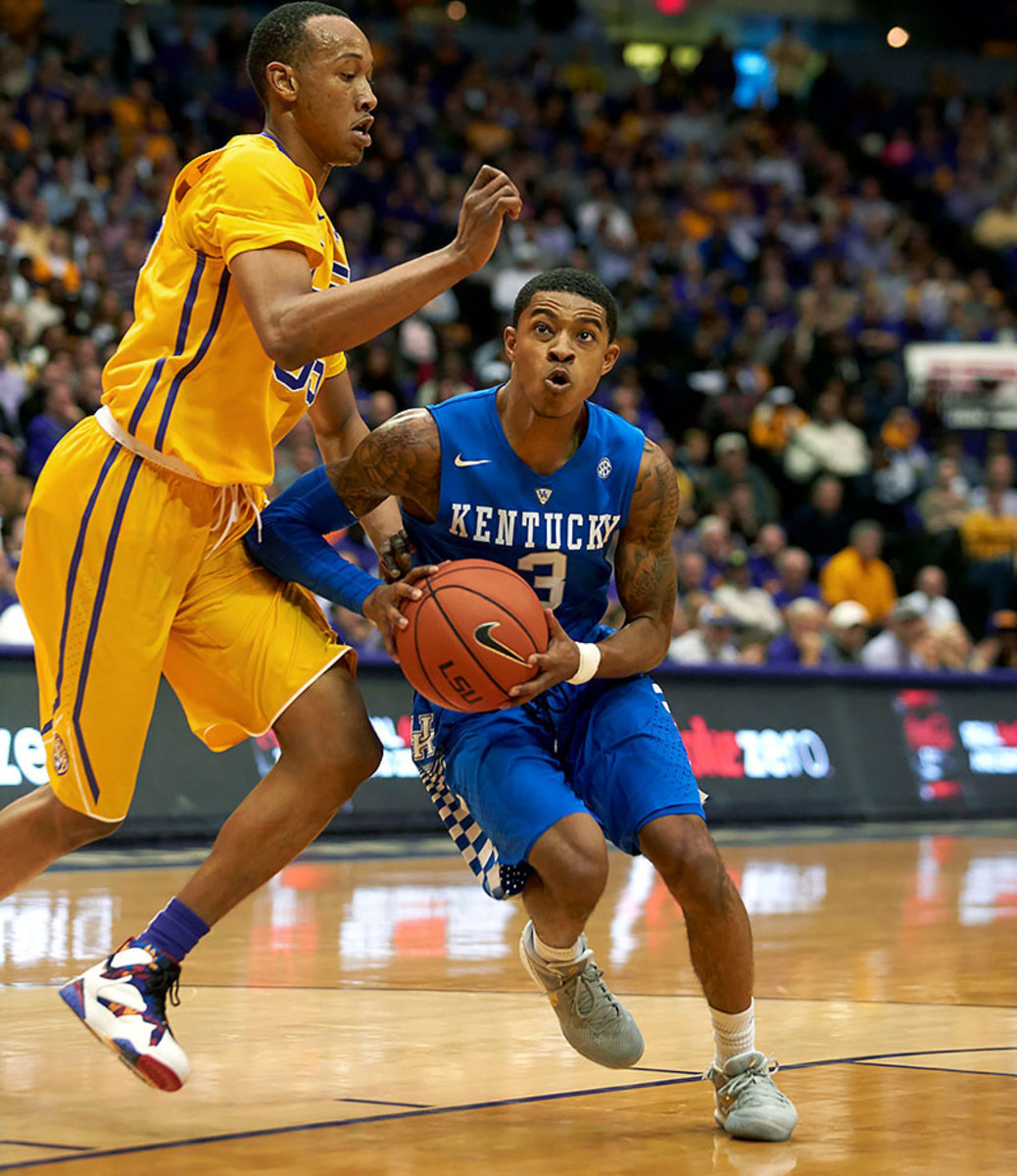
Ulis has solidified himself as a mid- to late-first rounder, and he’s probably the most instinctive passer among available guards. He won’t make many mistakes, and he’ll make everyone around him better. “Three inches taller,” one scout says, “and he would be the best point guard in this draft.” Medical concerns about his hip and his extremely thin frame gives some reason for pause.
#23: Cheick Diallo, Kansas — 6'9", 220 | Forward | Freshman
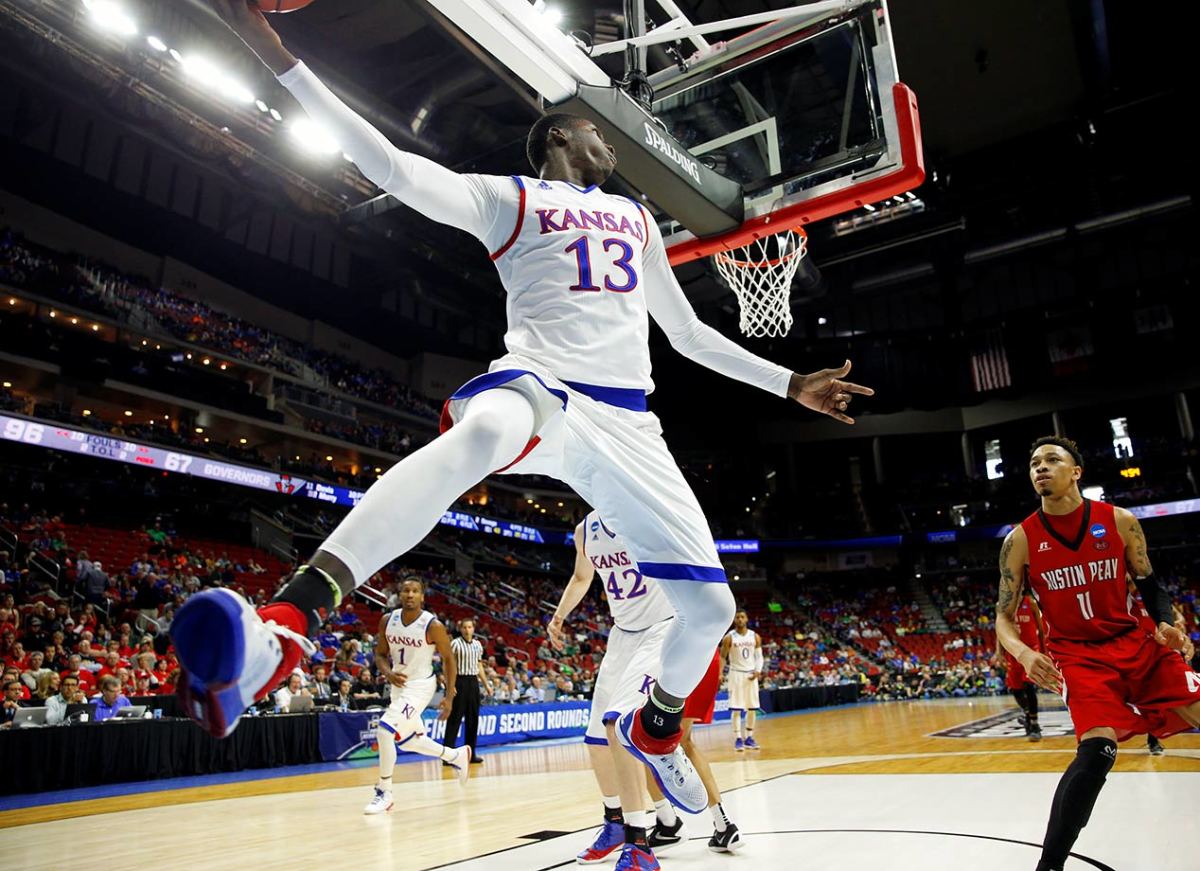
Diallo is bouncy, aggressive and has a reputation for playing extremely hard. With added seasoning, he should become a useful energy big.His considerable length helps compensate for his lack of height. He’s not a scorer beyond the dunks and hustle bucket, which limits his upside. Diallo was buried in the Kansas rotation, but will be granted more patience from here.
#24: DeAndre Bembry, St. Joseph — 6'6", 207 | Forward | Junior
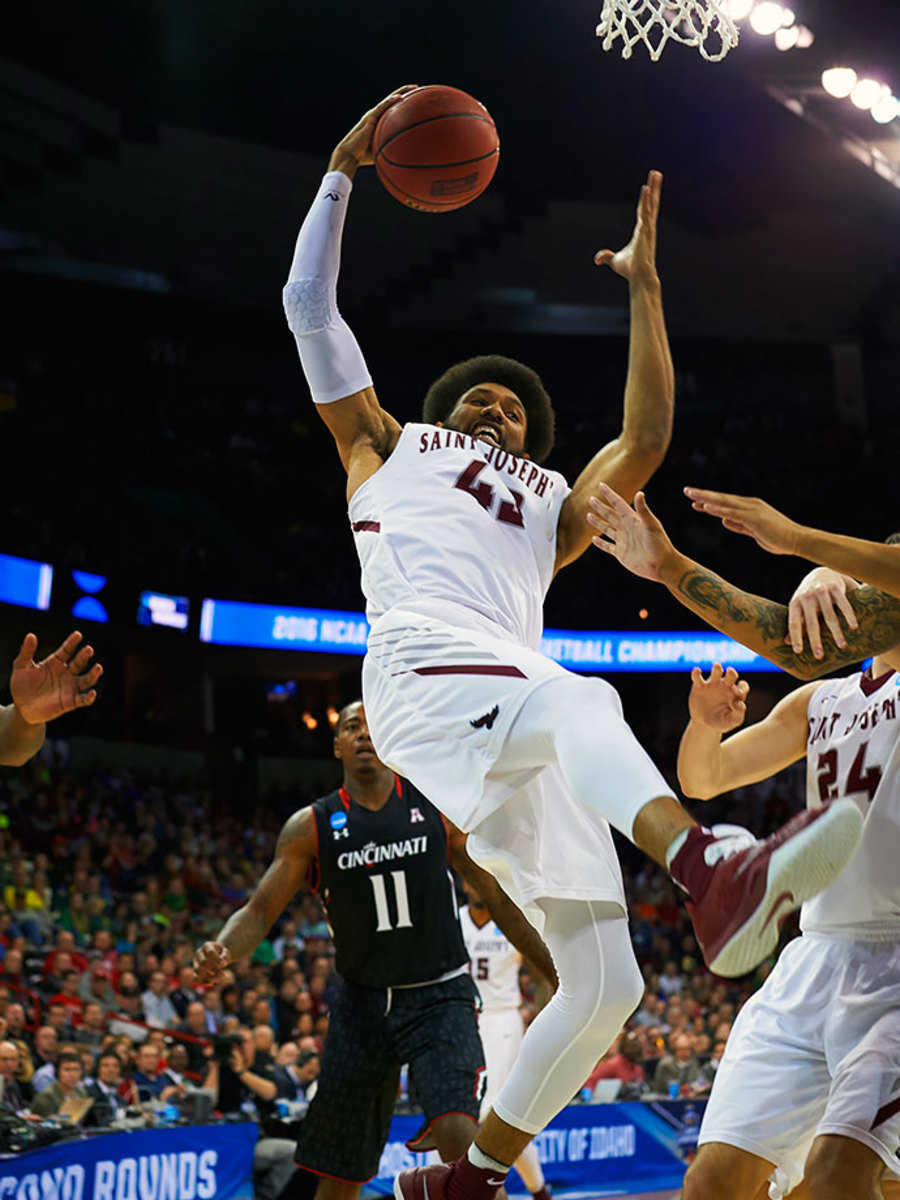
Bembry’s one of those players who just gets it. He’s got a mature game and the college production to back it up. He’s low-risk in that you can see him meshing into any offense with his playmaking and versatility. The major question is his three-point shot, but it’s not broken and if you play him alongside shooters it should alleviate some of those spacing concerns. Bembry could make an impact early in his career and help a playoff team next season.
#25: Ivica Zubac, Spain — 6'9", 265 | Forward | 19 years old
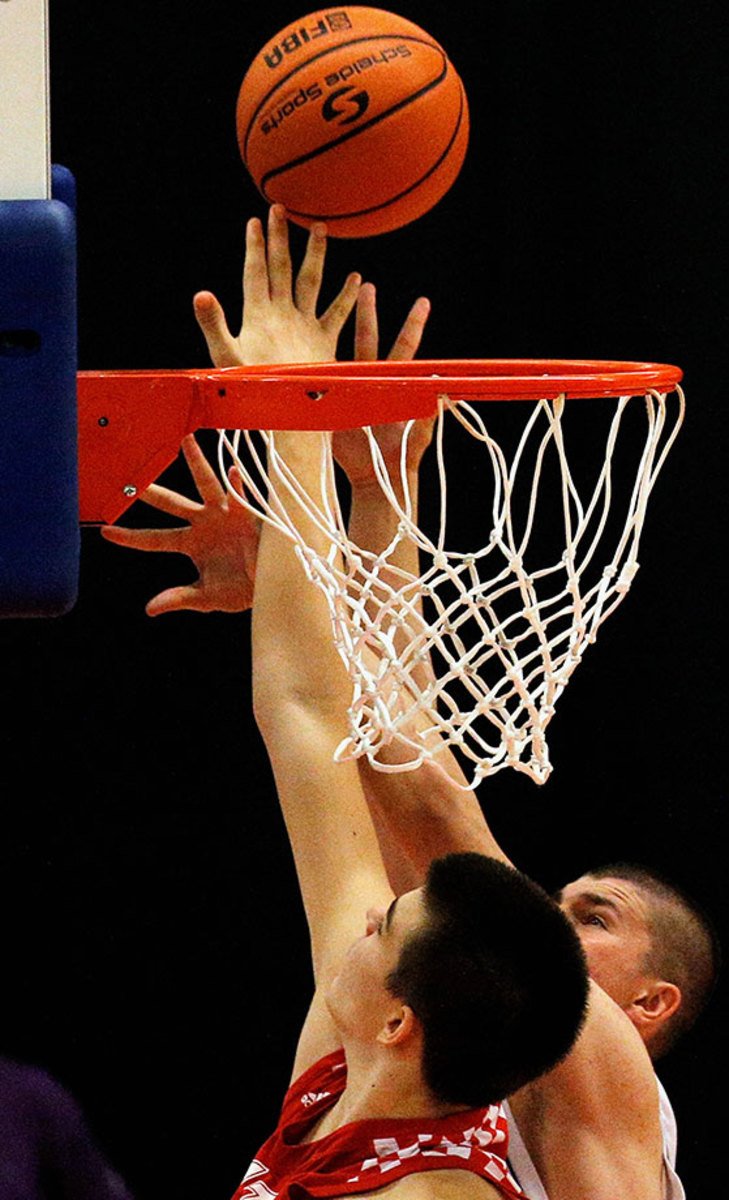
Zubac turned heads with insane production at the 2015 FIBA U19 Worlds (33.7 PER, 17.6 points, 7.9 rebounds). He’s a strong finisher with a great frame and nice post-up game. Zubac has potential to cut it defensively and should be a fit at the next level as a screen-setter and rim-runner. He apparently prefers to come over to the NBA next season, but can justify a place on someone’s bench given his tools and possibilities. If you can stash him, even better.
#26: Thon Maker, Orangeville Prep — 7'0", 219 | Center | 19 years old
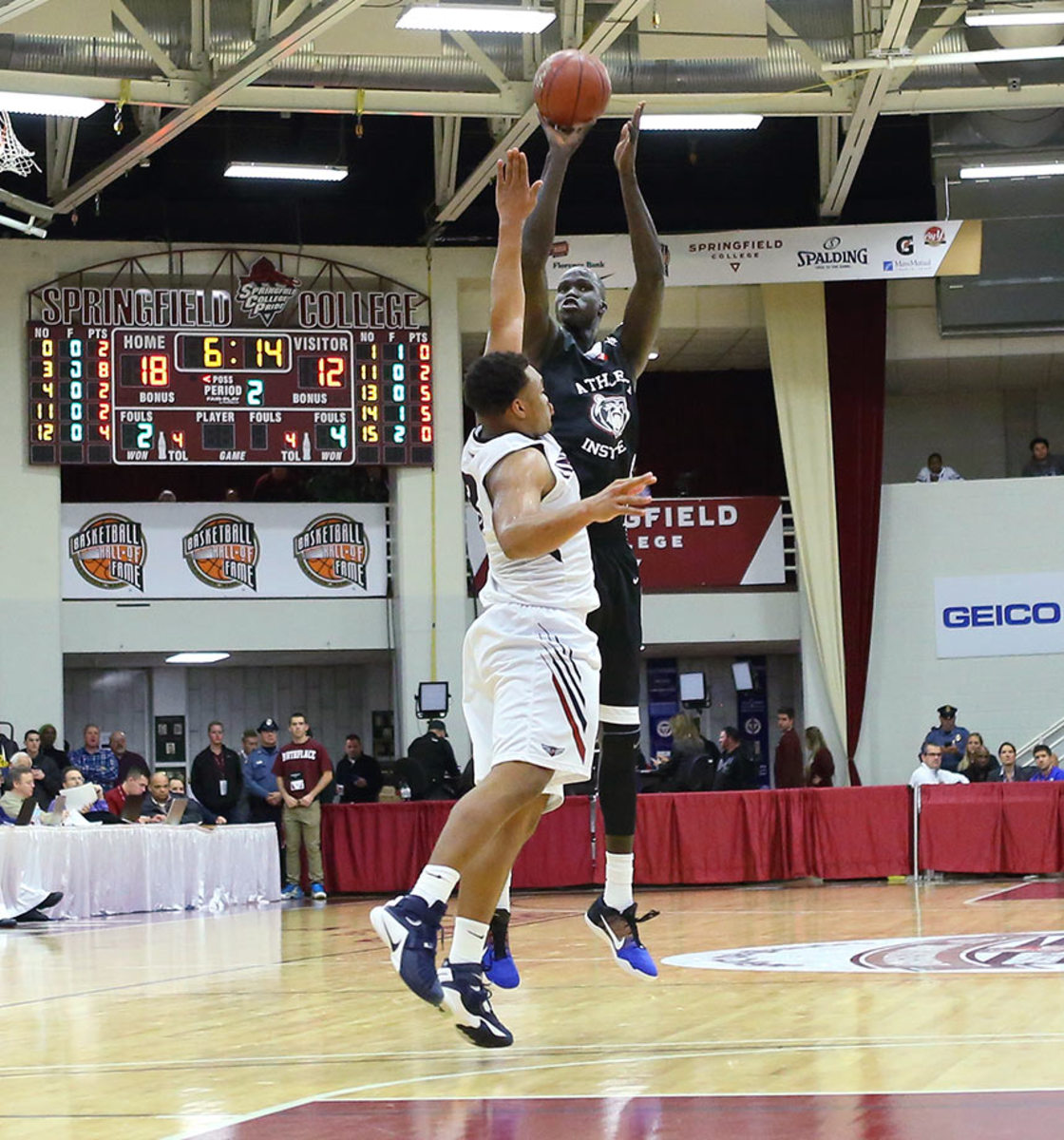
Opinions remain mixed on Maker, but it seems scouts are beginning to come around a bit. He’s a legit 7-footer, long and mobile, but, of course, rail-thin. People like his intangibles, yet there are still a ton of ifs when figuring out which of his strengths actually translate to the league. He might be an athletic energy big who can step out and make a shot, he also may never be able to bang inside. Maker has been working out against Brandon Ingram leading up to the draft and apparently held his own. There’s a wide range of outcomes here.
#27: Juan Hernangomez, Spain — 6'9", 225 | Forward | 20 years old
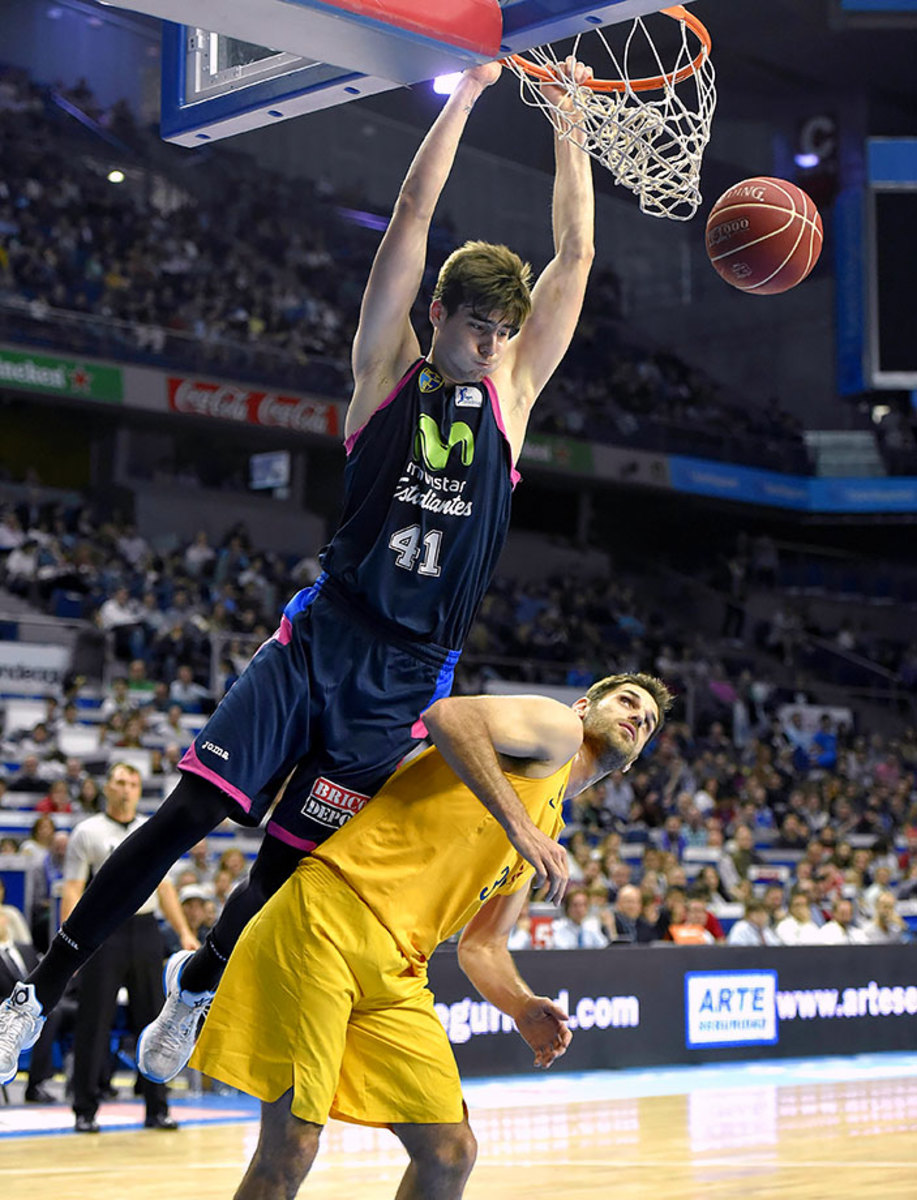
Hernangomez enjoyed a strong season in Spain and won’t turn 21 until September. A skilled stretch-four who could eventually play some three, he’s comfortable getting his offense spotting up and finishing inside. One scout cited Hernangomez’s high energy level and deceptive leaping ability. It helps he’s already playing legit minutes and producing in a very tough league. Think late first round.
#28: A.J. Hammons, Purdue — 7'0", 281 | Center | Senior
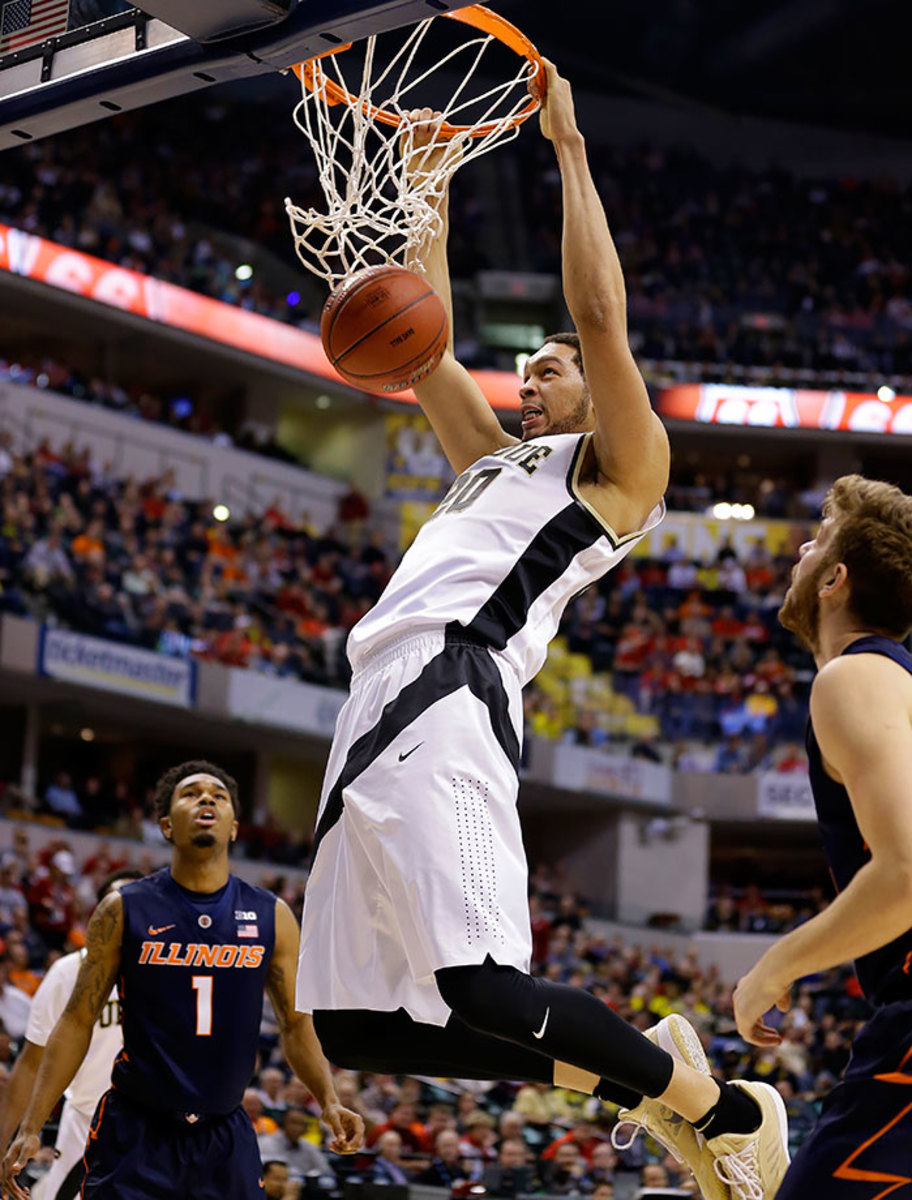
There’s no reason Hammons shouldn’t be a useful rim protector from day one. He’ll turn 24 soon, which will keep him out of the upper reaches of the draft, but he’s an NBA-level talent with an improving offensive skill level and pro-ready body. The question with him has always been his motor, and teams are fully aware of some off-court discipline issues at Purdue. There are a lot of ifs, but Hammons could surprise if the lightbulb starts to go off.
#29: Malik Beasley, Florida State — 6'5", 190 | Guard | Freshman
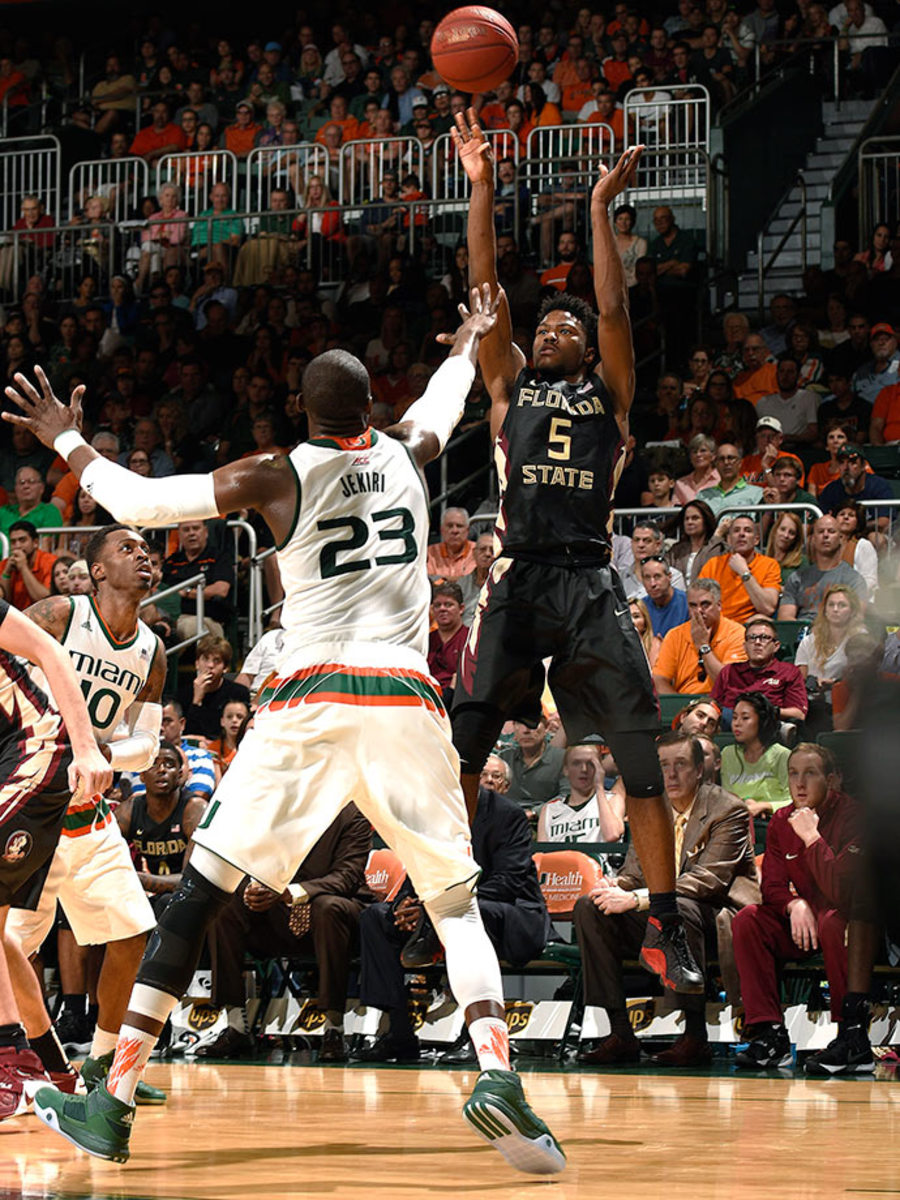
An athletic slasher with a nose for the basket, Beasley demonstrated the ability to score at all three levels in his one season at FSU, and improved as the year went on. He can shoot it, has a great frame and brings notably strong intangibles in terms of makeup and competitiveness. He has a metal rod in his leg after a stress fracture injury that will concern teams.
#30: Stephen Zimmerman, UNLV — 7'0", 240 | Center | Freshman
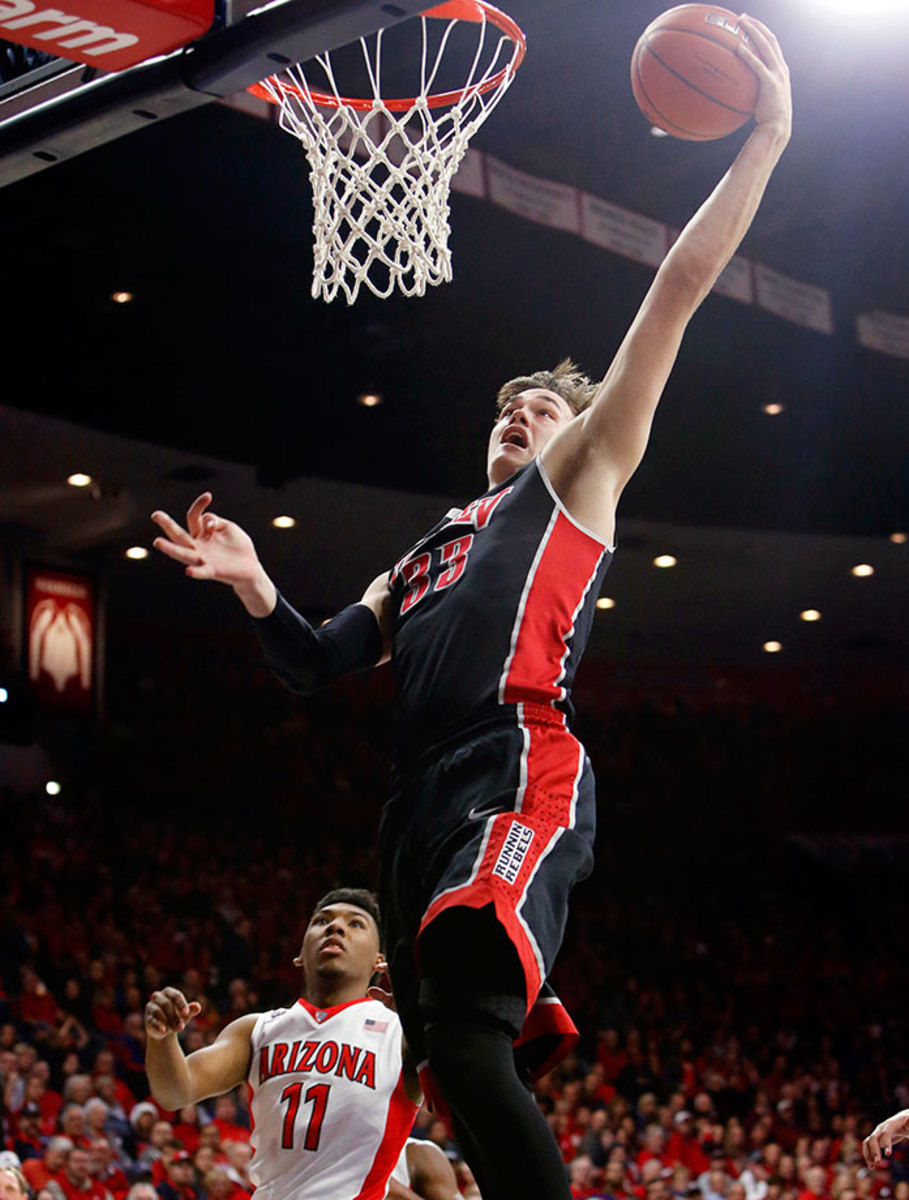
Zimmerman has great size and mobility, and a pretty nice shooting touch. He’s not a guy who really loves to bang inside and has a tendency to float away from the basket too much. He’ll need to bulk up to play center and to defend his position. He’s a dart throw, but taking a chance on a stretch big with some upside isn’t the worst thing in this range.
Carter swapped his innate eating habits for baked meats and wholesome vegetables while eliminating carbs. “My mom’s an amazing cook, but unfortunately she’s a southern cook,” Carter says. “Fried chicken, fried pork chops, fried everything.” He completed multiple daily workouts with Maryland’s director of basketball performance Kyle Tarp, compounding explosive and agility drills with conditioning in the mornings, high-intensity weight training in the afternoons with on-court skill work mixed in between. Before his debut as a redshirt-junior this fall, Carter had dropped 18 pounds.
As Maryland opened the season 15–1, Carter carried over his extensive redshirt workload, constantly pinging the Terps’ players’ group chat to start late-night shooting exhibitions in the cavernous XFINITY Center. He relished the aura of Big Ten basketball. “It was a bigger environment,” Linda says. The Terps ultimately reached the Sweet 16, tasting the success Carter had yearned for.
He wants more, forgoing his senior season to enter the draft. On paper, Carter possess the skillset of a perfect modern-day, playmaking four man and a 7’3" wingspan that should help him overcome the deficiencies he showed defending the perimeter at school. It’s a smooth jumper that ultimately has Carter primed for an early second round selection, though. A stroke he perfected across the street, on the black hoop that began rusting years ago.
